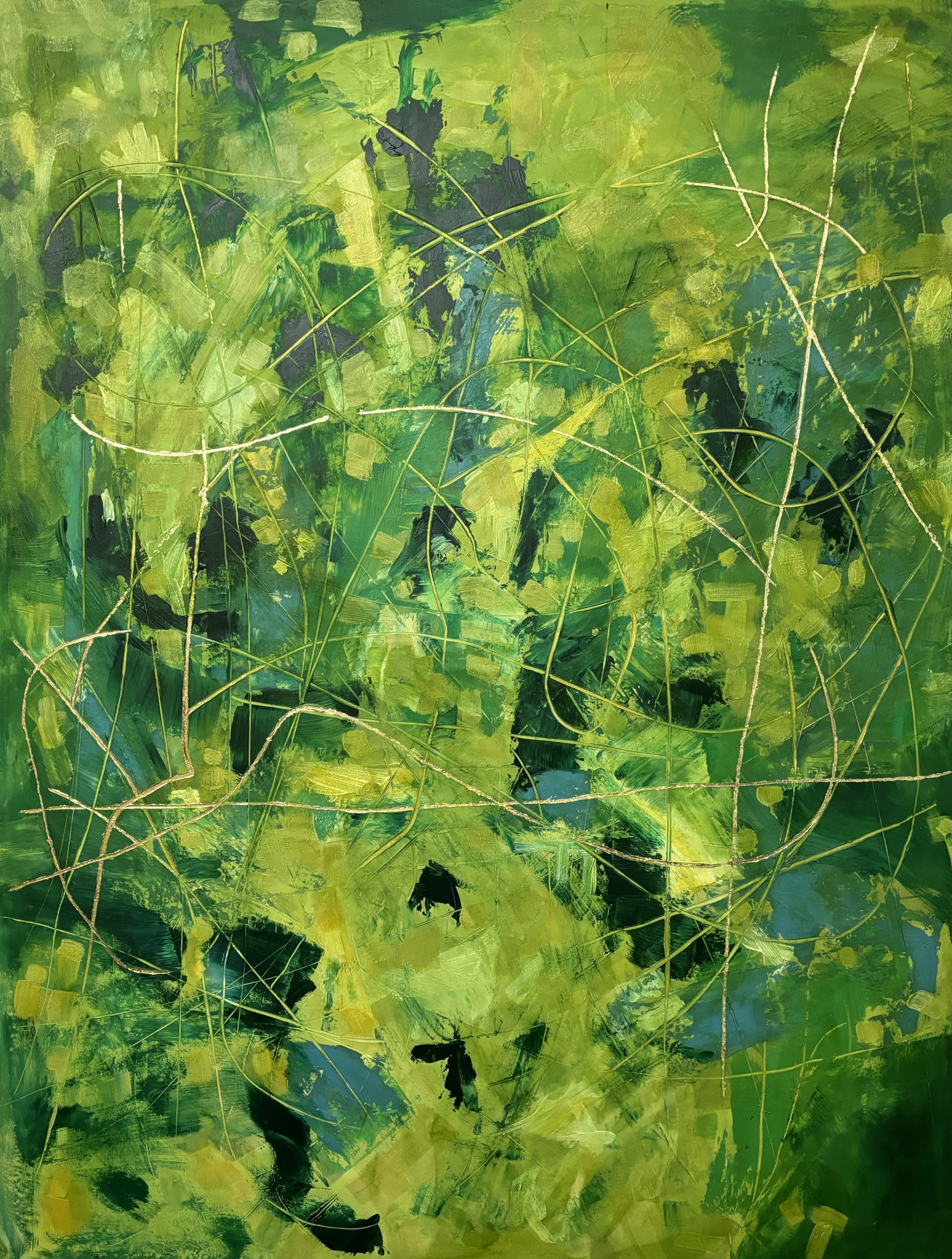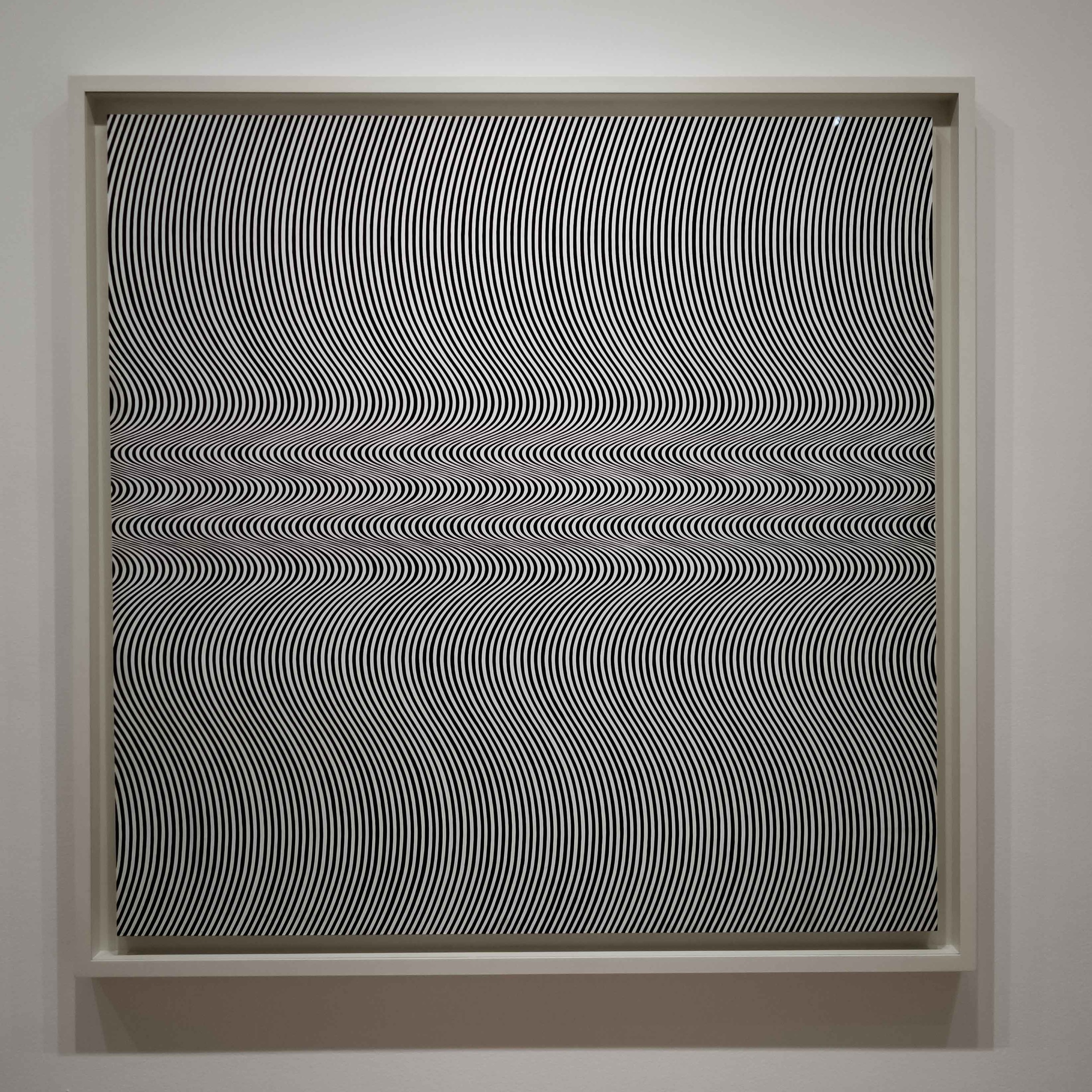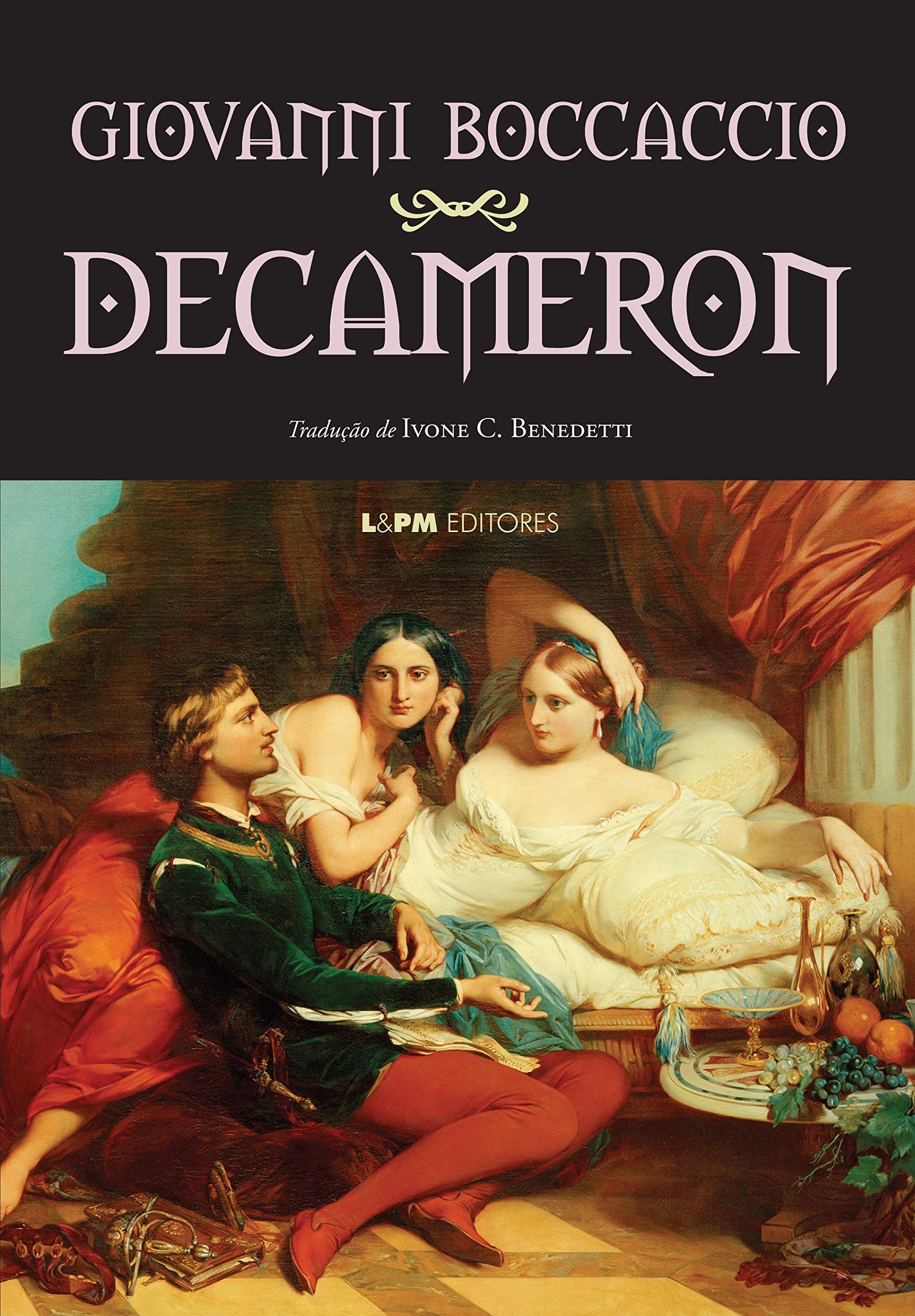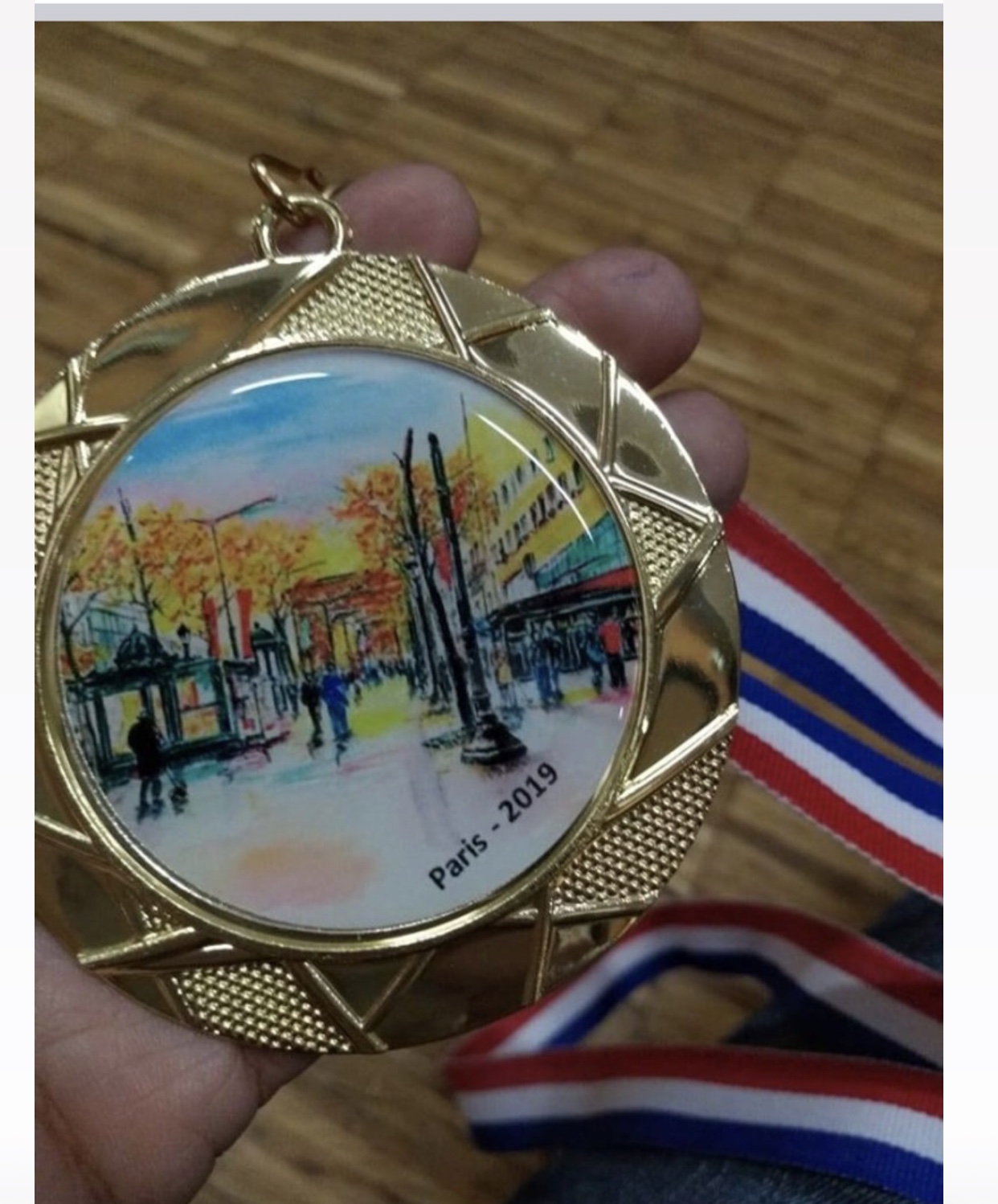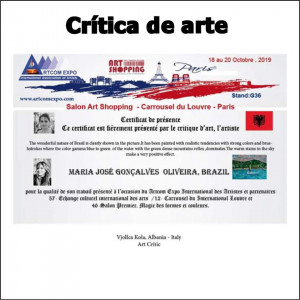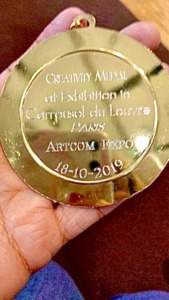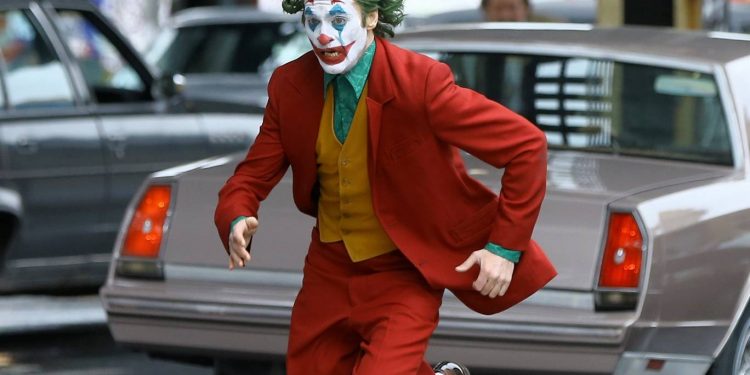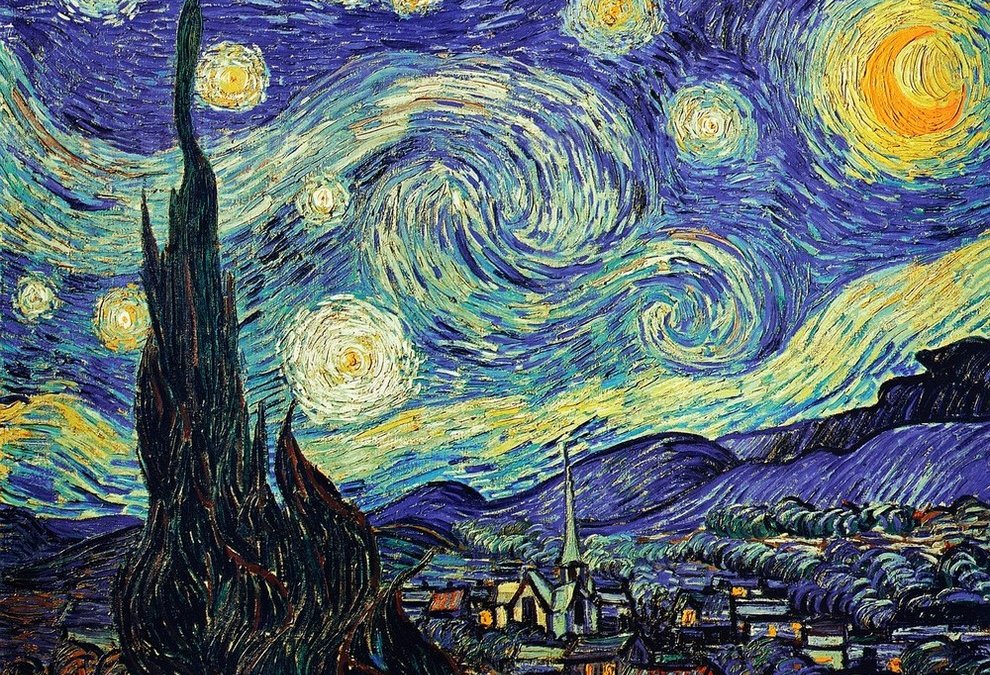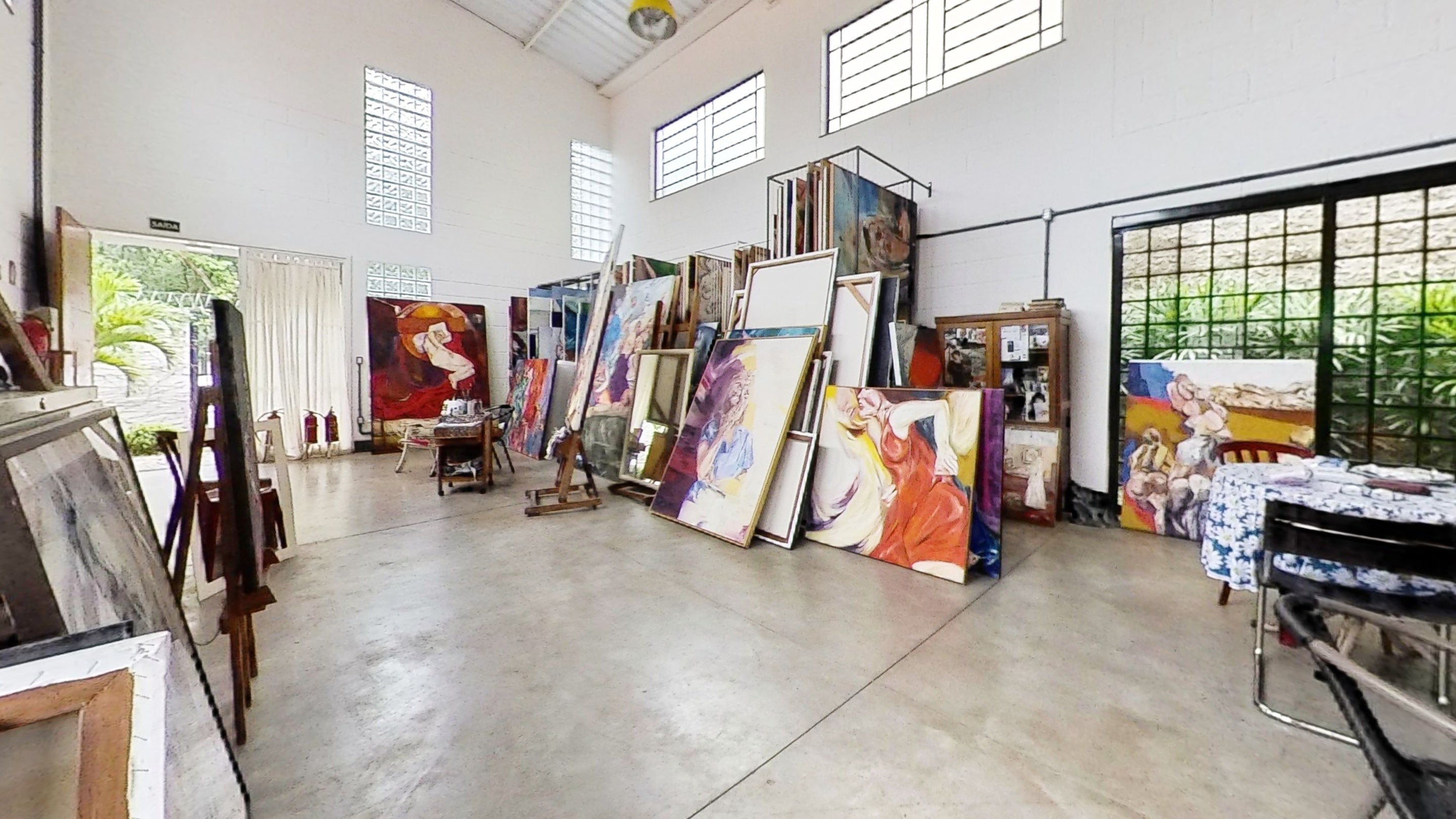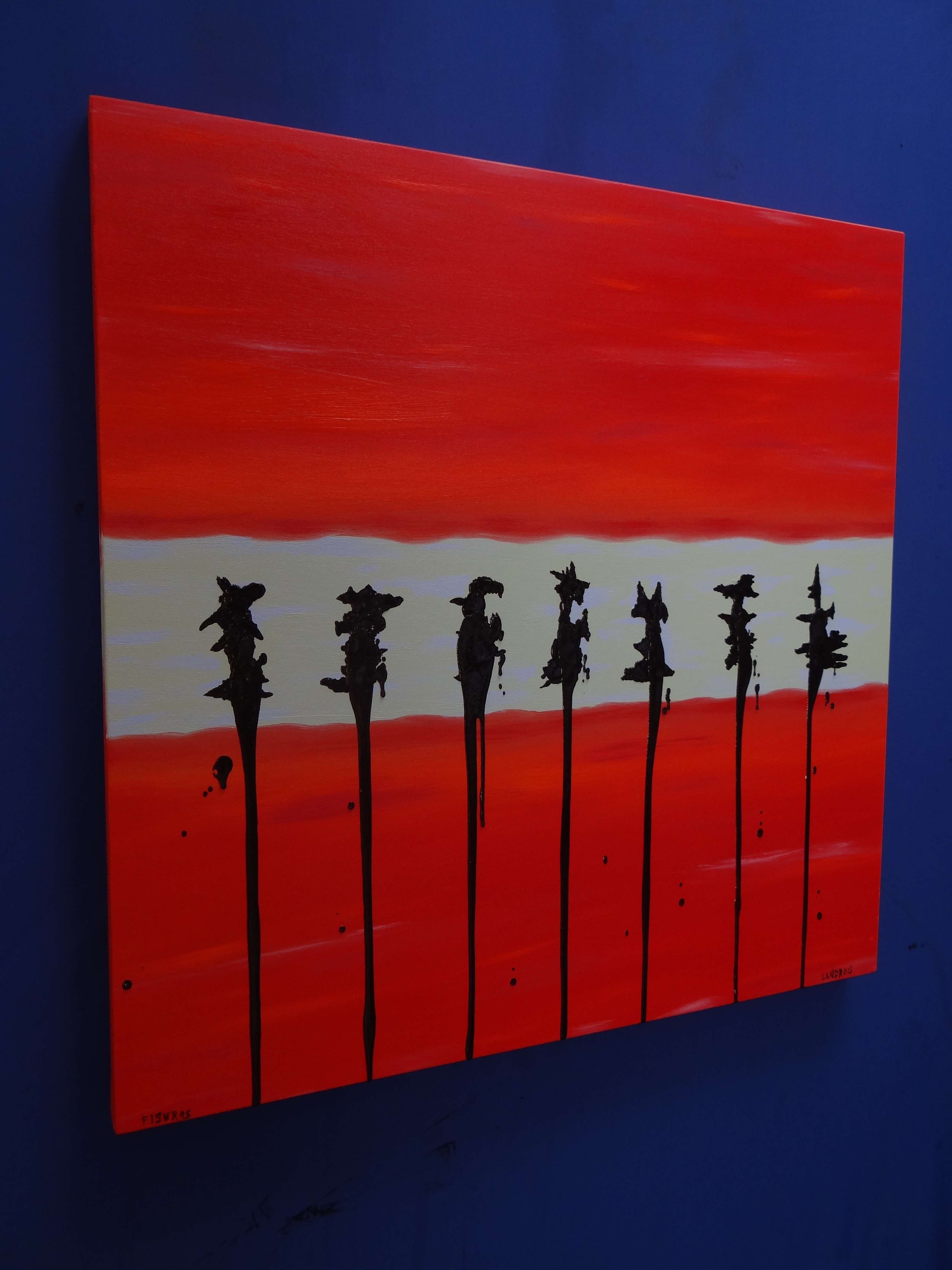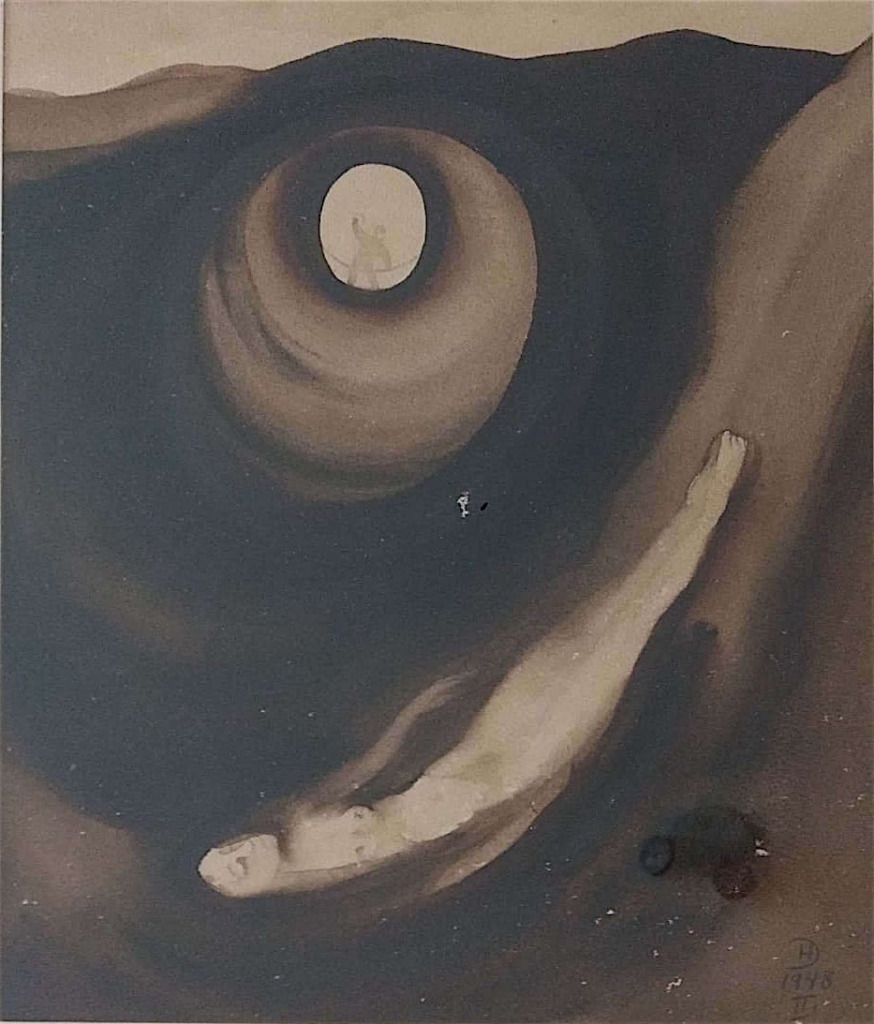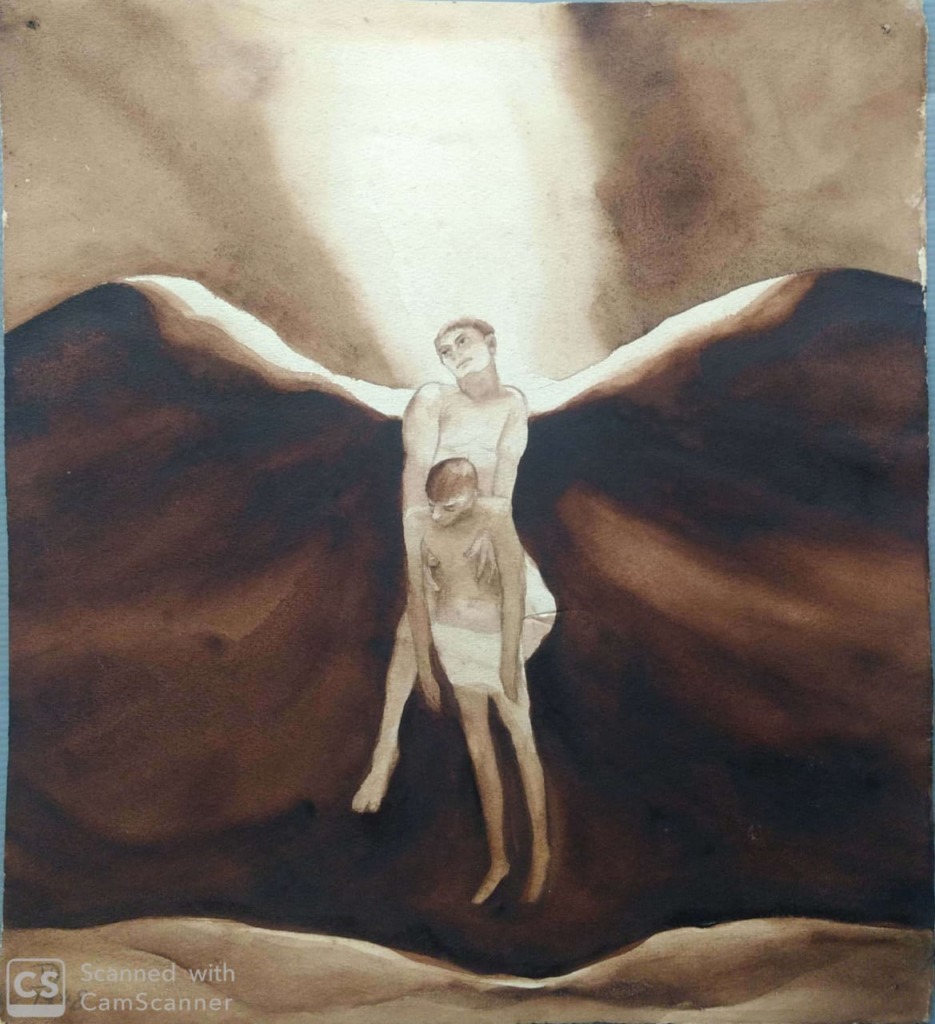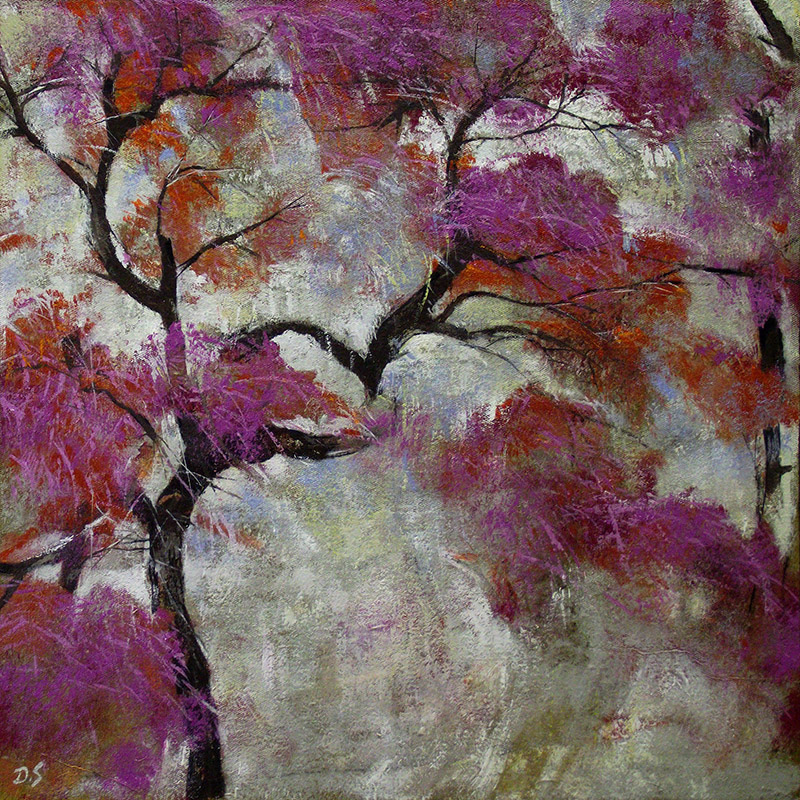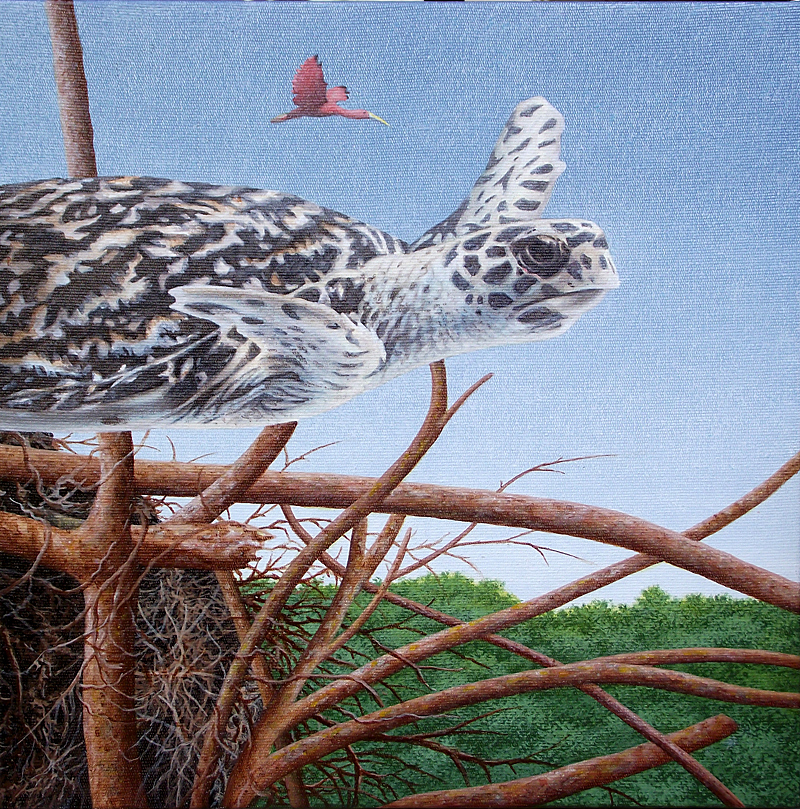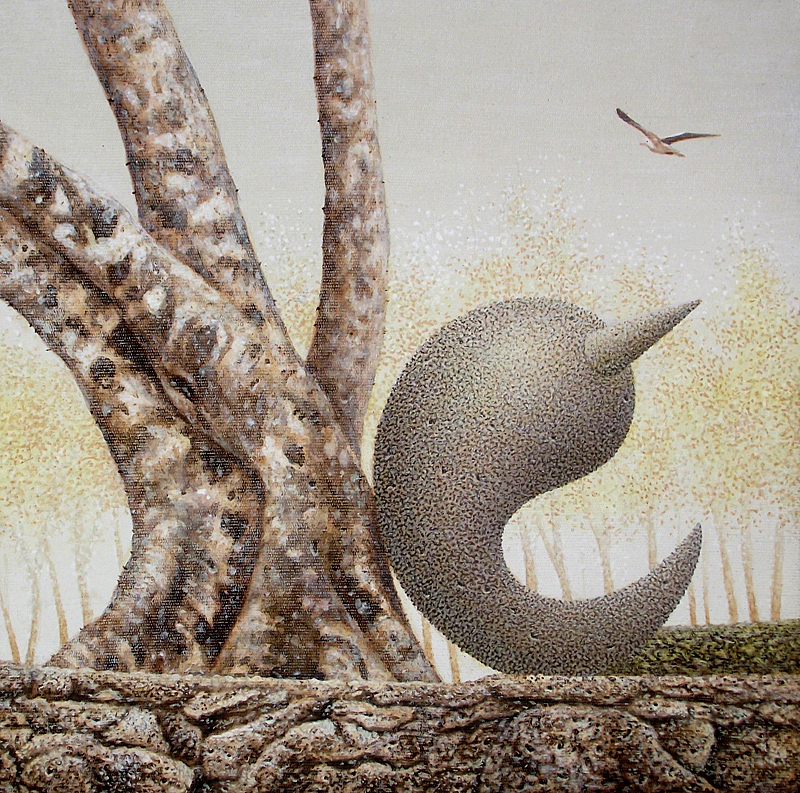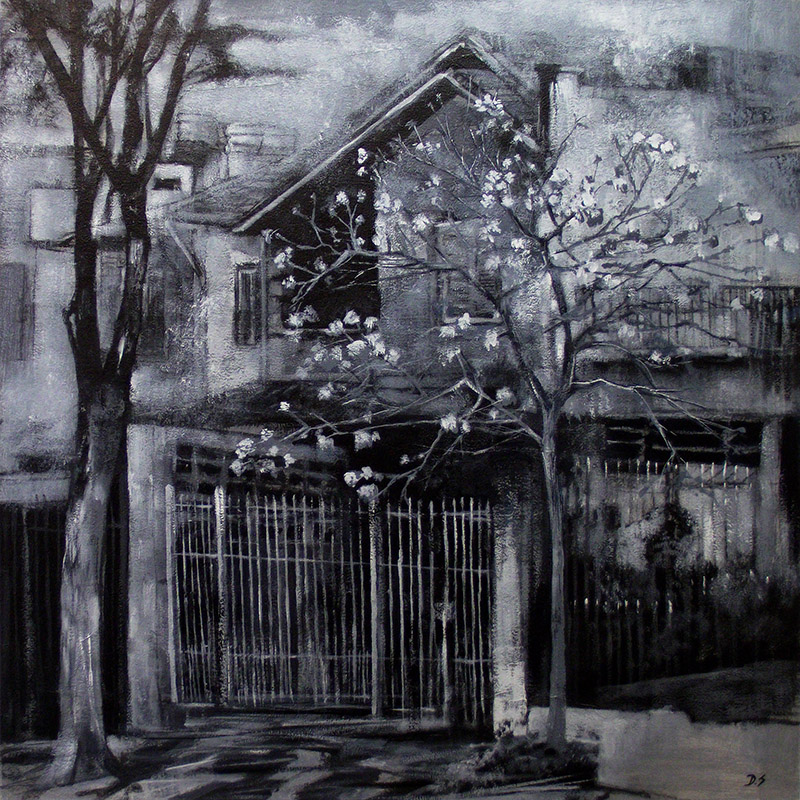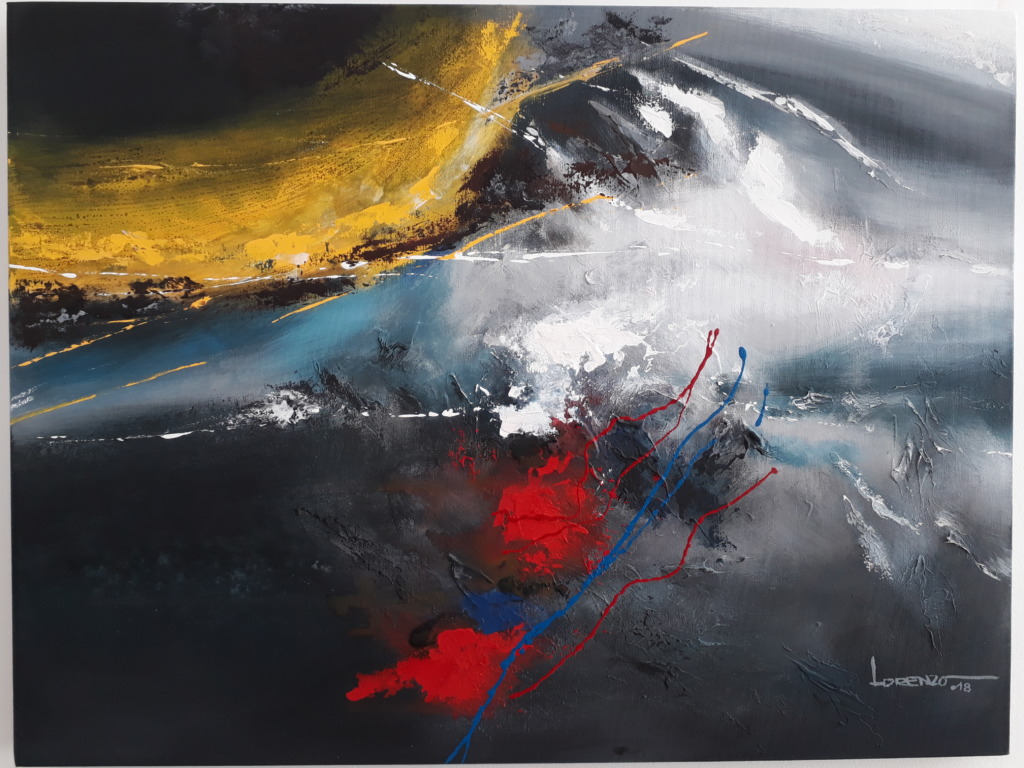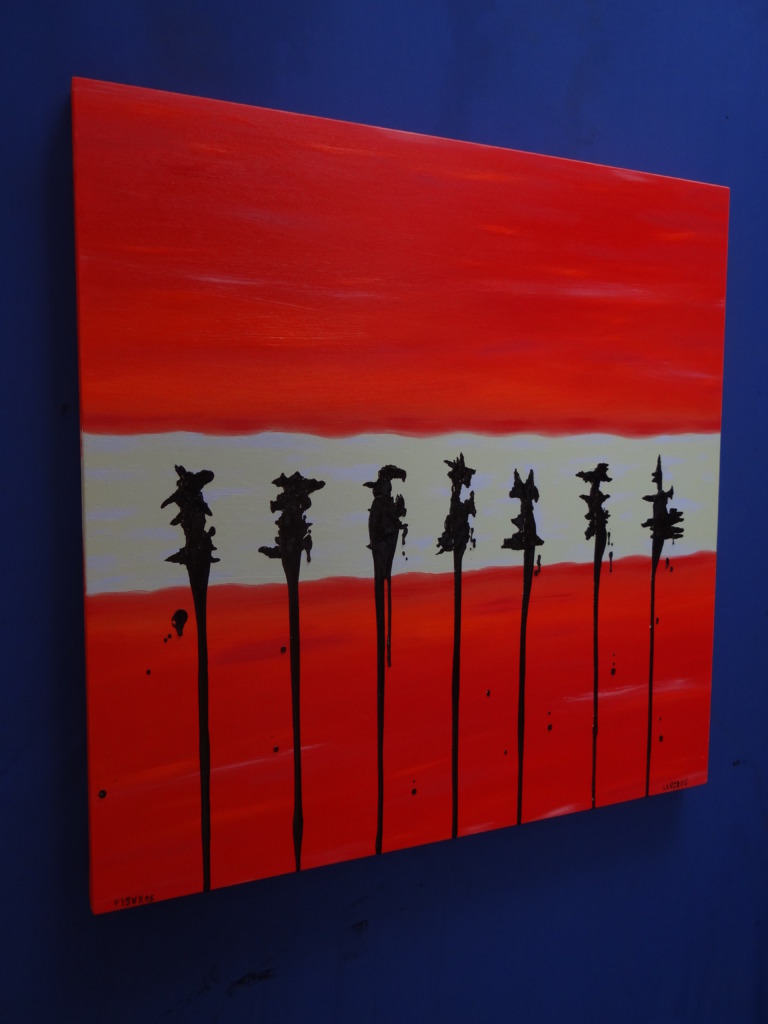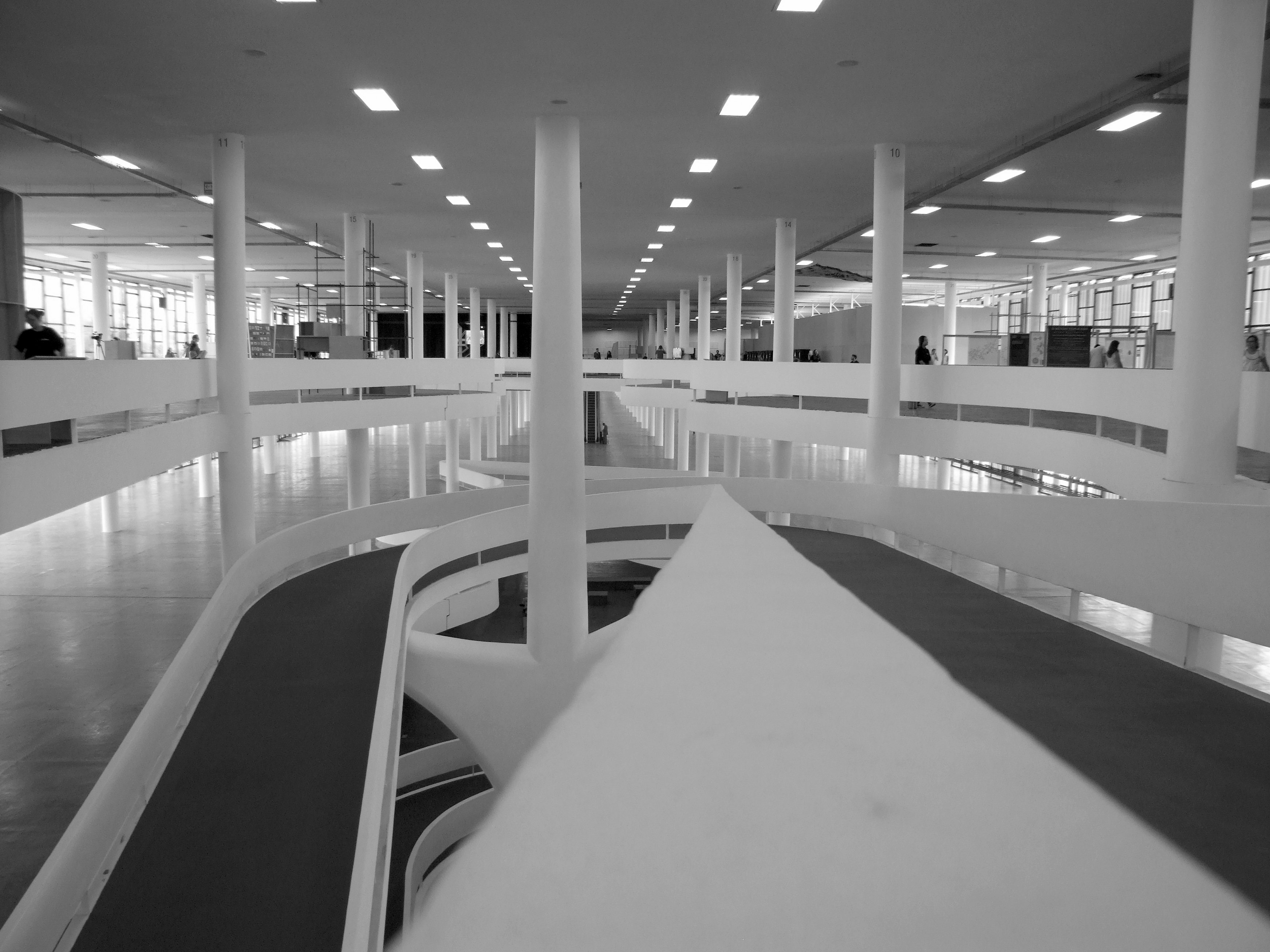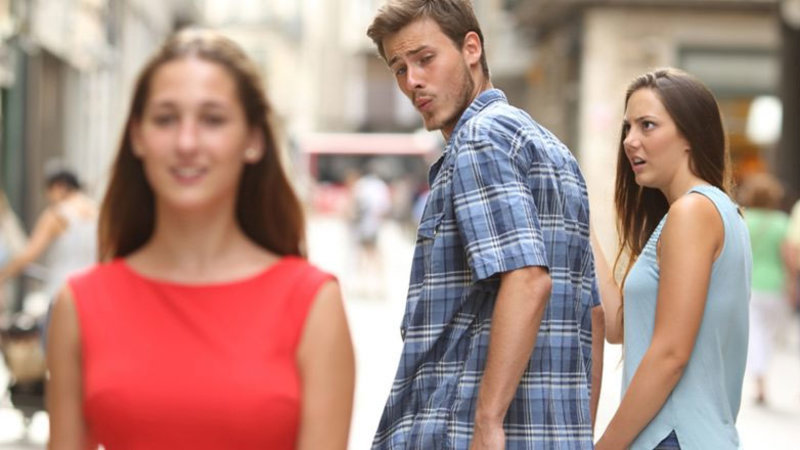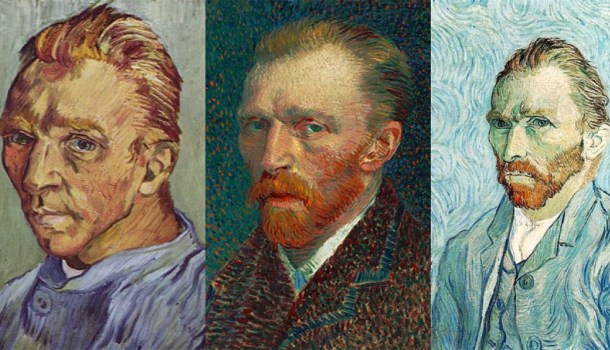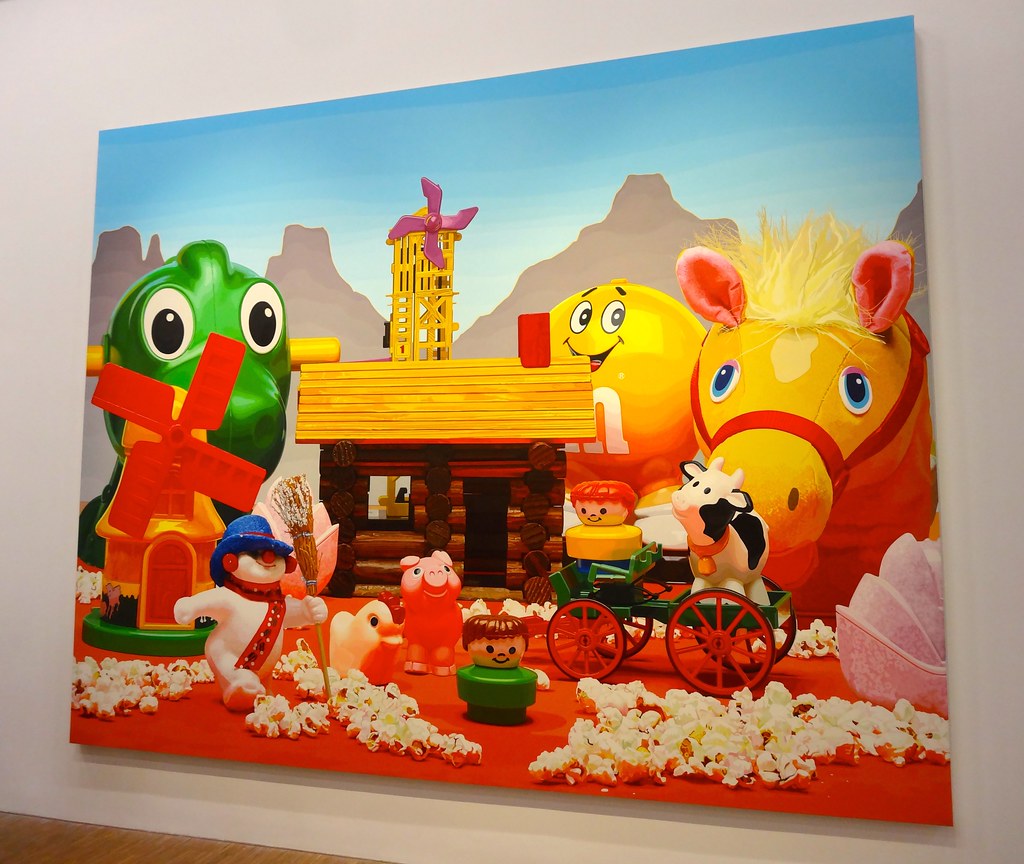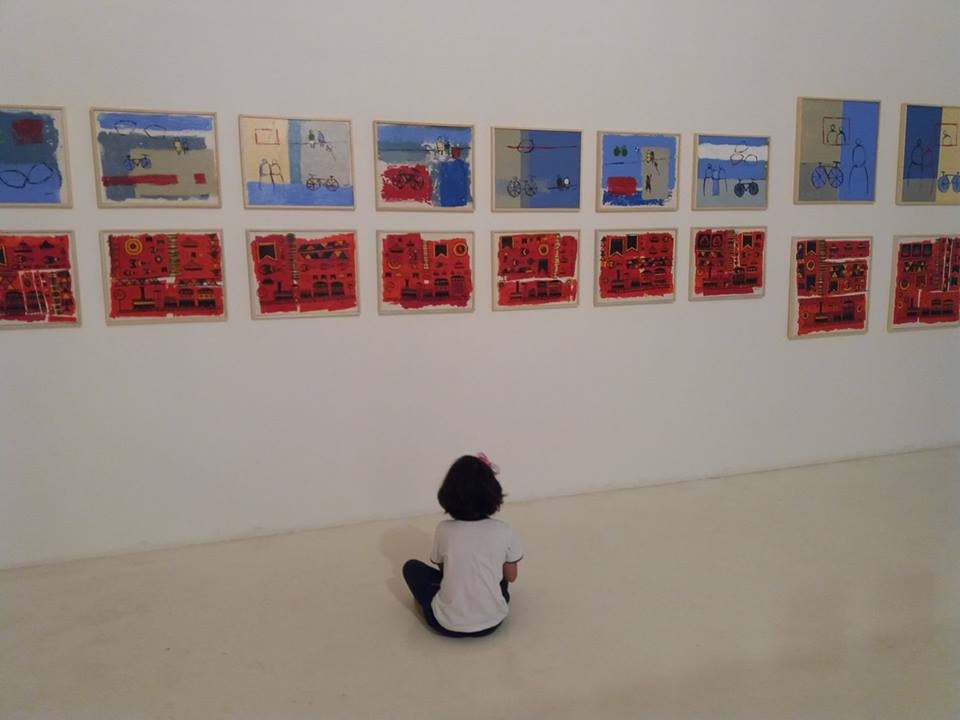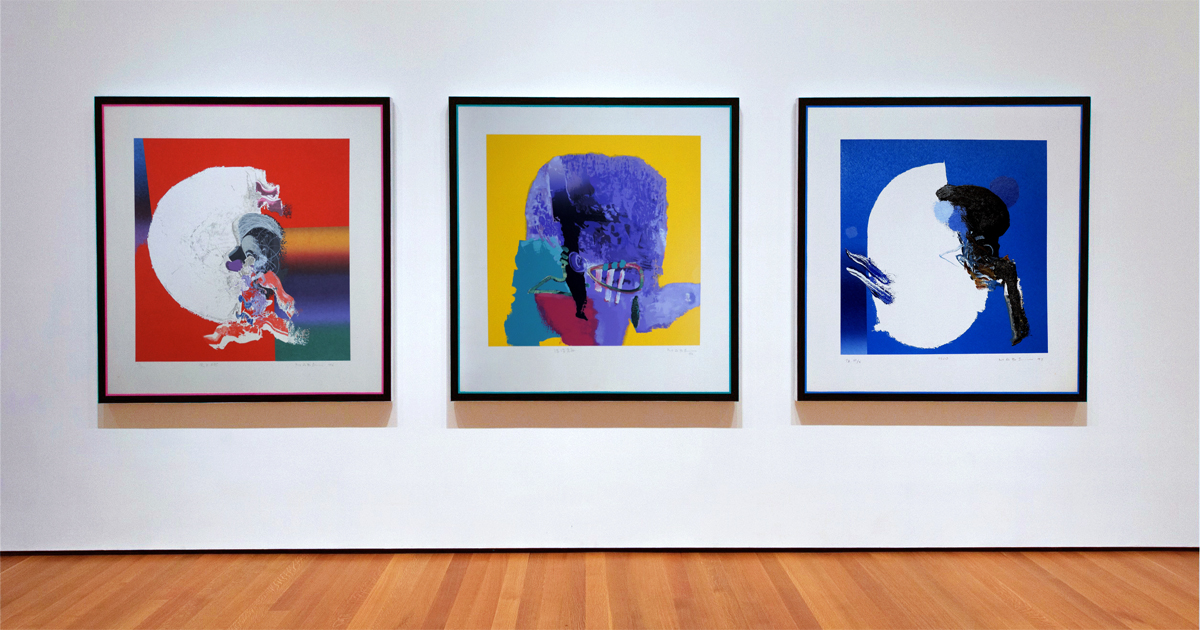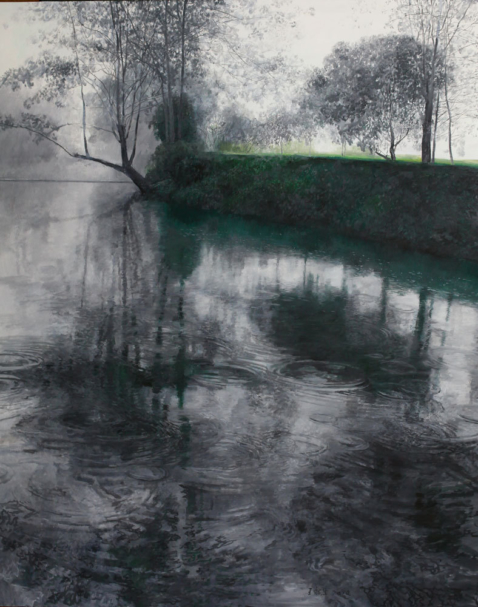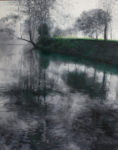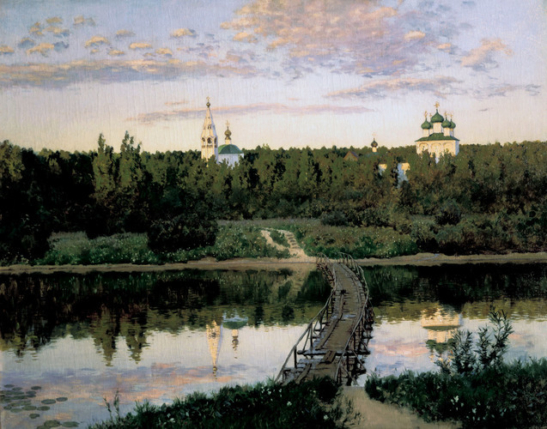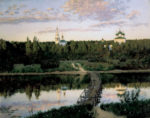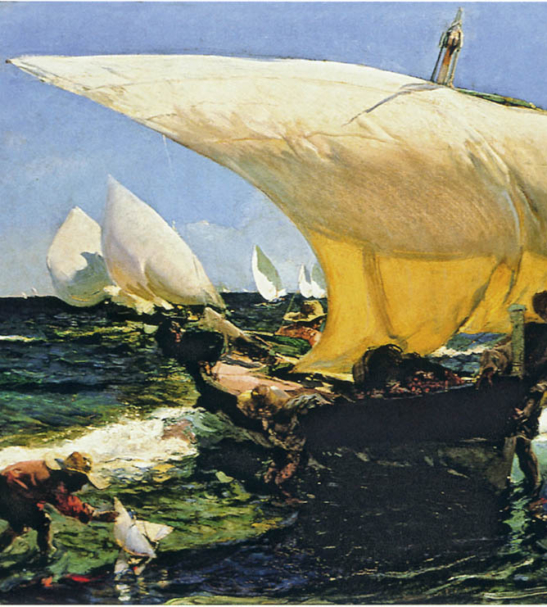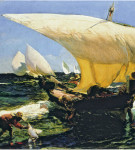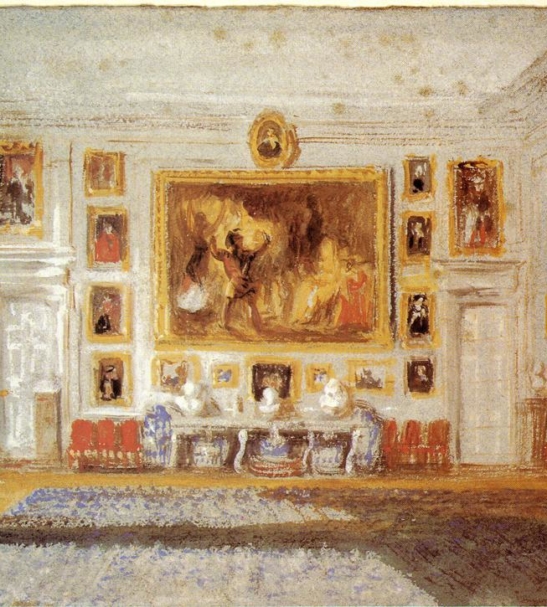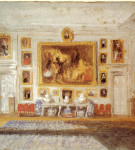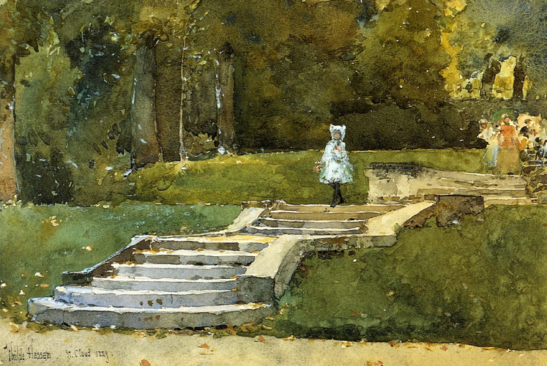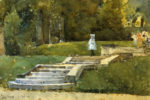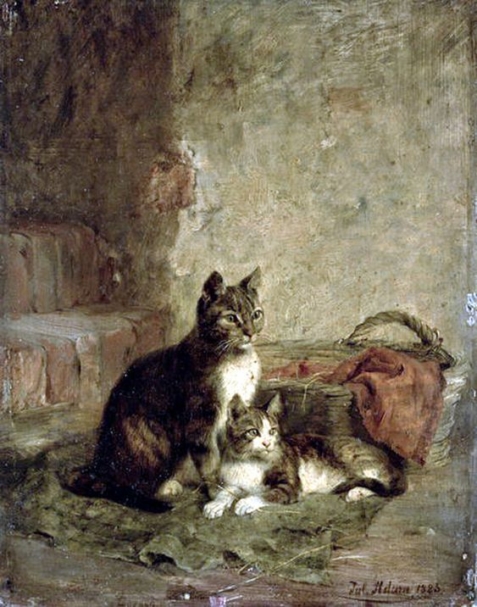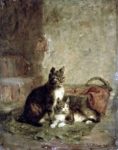Guia do Colecionador de Arte: Como Escolher Obras com Confiança
Guia do Colecionador de Arte: Como Escolher Obras com Confiança
Você está pronto para mergulhar no mundo cativante da arte? Como colecionador em potencial, você pode se encontrar diante de um vasto mar de opções, desde pinturas clássicas até instalações contemporâneas. Mas não se preocupe, estamos aqui para ajudá-lo a navegar nesse universo intrigante.
Descubra Seu Estilo
Antes de começar sua jornada como colecionador de arte, é essencial entender seus próprios gostos e preferências. Você se inclina mais para o abstrato ou o realismo? Aprecia obras vibrantes e coloridas ou prefere algo mais sutil e monocromático? Reserve um tempo para explorar diferentes estilos e movimentos artísticos. Visitas a galerias, museus e exposições são ótimas maneiras de se familiarizar com uma variedade de obras e descobrir o que ressoa com você.
Pesquise e Aprenda
Assim como qualquer outra forma de investimento, a pesquisa é fundamental ao comprar arte. Familiarize-se com os artistas que despertam seu interesse. Quem são eles? Qual é a sua história e influência? Examine o mercado de arte e fique atento às tendências. Existem também excelentes recursos online, como fóruns de discussão, blogs especializados e redes sociais, onde você pode aprender com outros entusiastas e especialistas.
Investigue a Autenticidade
Ao comprar uma obra de arte, é crucial verificar sua autenticidade e proveniência. Certifique-se de que a peça vem com documentação adequada, incluindo certificados de autenticidade e histórico de propriedade. Se possível, consulte especialistas ou instituições respeitadas para validar a autenticidade da obra. A transparência é fundamental em qualquer transação de arte.
Avalie o Potencial de Valorização
Embora o principal objetivo de colecionar arte deva ser o prazer estético, muitos também consideram o potencial de valorização das obras ao longo do tempo. Embora seja difícil prever com certeza quais obras se tornarão mais valiosas no futuro, pesquisar o histórico de vendas de um artista e sua relevância no cenário artístico pode oferecer algumas pistas.
Conecte-se com Especialistas e Colegas
Não subestime o poder da comunidade de arte. Ao se conectar com outros colecionadores, galeristas e especialistas, você pode obter insights valiosos, descobrir novas obras e expandir sua rede de contatos. Participe de eventos, palestras e grupos de discussão para mergulhar ainda mais fundo no mundo da arte.
Conclusão
Colecionar arte é uma jornada emocionante e gratificante. Ao seguir essas dicas simples, você estará bem equipado para começar sua própria coleção e desfrutar das infinitas possibilidades que o mundo da arte tem a oferecer. Lembre-se sempre de confiar em seus instintos e escolher obras que verdadeiramente o inspirem. Afinal, a arte é uma expressão única da alma humana, destinada a ser apreciada e compartilhada. Boa caça às obras de arte perfeitas para a sua coleção!
Pablo Picasso, vida e obra, trajetória, onde ver suas obras, obras mais famosas e histórias curiosas, imagens das obras
1. Introdução
Pablo Picasso é, sem dúvida, um dos artistas mais renomados e influentes do século XX. Sua vida e obra são repletas de trajetórias fascinantes que cativaram o mundo da arte. Desde sua infância em Málaga, na Espanha, até sua consagração como um dos fundadores do movimento cubista, Picasso deixou um legado duradouro nas artes visuais. Este artigo explora a vida e obra de Picasso, suas obras mais famosas, onde vê-las em exposições e alguns fatos curiosos sobre o artista. Além disso, incluímos imagens de suas obras mais emblemáticas para apreciação visual. Acompanhe para conhecer mais sobre o cativante mundo de Pablo Picasso.
2. Quem foi Pablo Picasso?
Pablo Picasso foi um renomado artista espanhol nascido em 1881 e falecido em 1973. Ele foi um dos artistas mais influentes do século XX, deixando um legado duradouro nas artes visuais. Picasso é conhecido por seu estilo versátil e inovador, explorando diversas técnicas e estilos ao longo de sua extensa carreira.
Desde cedo, Picasso mostrou um talento excepcional para as artes. Ele começou a pintar aos sete anos e rapidamente se destacou entre seus contemporâneos. Picasso foi responsável por fundar o movimento cubista juntamente com Georges Braque, revolucionando a forma como a arte era concebida.
Ao longo de sua vida, Picasso produziu uma quantidade impressionante de obras de arte, incluindo pinturas, esculturas, cerâmicas, desenhos e gravuras. Suas obras mais famosas incluem “Les Demoiselles d’Avignon”, “Guernica” e “Les Meninas”.
Continue lendo para descobrir onde você pode ver suas obras e algumas histórias curiosas sobre esse excêntrico artista!
3. A trajetória de Picasso
Pablo Picasso teve uma trajetória artística singular, demonstrando talento desde cedo e alcançando grande reconhecimento ao longo de sua carreira. Ele passou por diferentes fases e estilos, experimentando e inovando constantemente.
No início de sua carreira, Picasso foi influenciado pelo período azul e rosa, retratando temas melancólicos e introspectivos. Em seguida, passou por uma fase africana, na qual explorava formas mais expressivas e primitivas. Mas foi com o movimento cubista que ele revolucionou a arte moderna, desconstruindo as formas e apresentando múltiplas perspectivas em suas obras.
Picasso foi um artista prolífico, produzindo uma vasta quantidade de obras ao longo de sua vida. Sua genialidade e originalidade fizeram dele um dos artistas mais importantes e influentes do século XX.
Descubra agora onde você pode encontrar algumas das obras mais famosas de Picasso e ainda mais histórias curiosas sobre esse artista multifacetado!
4. Onde ver suas obras
Embora as obras de Pablo Picasso estejam espalhadas por importantes museus e galerias de arte ao redor do mundo, há alguns locais específicos onde você pode apreciar suas obras mais famosas e emblemáticas.
Um dos lugares mais renomados para ver as obras de Picasso é o Museu Picasso, localizado em Barcelona, Espanha. O museu abriga uma extensa coleção de mais de 4.000 peças, incluindo pinturas, esculturas, desenhos e cerâmicas. Aqui, os visitantes podem explorar a evolução artística de Picasso, desde os primeiros anos até as suas últimas obras.
Outro lugar imperdível é o Museu Picasso, em Paris, França. Situado no pitoresco bairro de Marais, o museu é uma verdadeira homenagem ao artista. Com mais de 5.000 obras, incluindo rascunhos, pinturas e esculturas, os visitantes podem mergulhar na mente e na criatividade de Picasso.
Além desses museus, algumas das obras mais famosas de Picasso também podem ser encontradas em museus e coleções particulares ao redor do mundo. Se você está planejando uma viagem, certifique-se de incluir esses locais na sua lista de paradas obrigatórias!
No próximo tópico, vamos explorar algumas das obras mais famosas de Picasso e suas histórias por trás delas. Fique atento!
5. As obras mais famosas de Picasso
Picasso é conhecido por suas obras revolucionárias e icônicas que marcaram a história da arte. Nesta seção, vamos explorar algumas de suas obras mais famosas e as histórias por trás delas.
1. “Les Demoiselles d’Avignon” (1907) – Esta é uma das pinturas mais famosas de Picasso e um dos primeiros exemplos do movimento cubista. Ela retrata cinco prostitutas em um bordel em Barcelona, e sua composição inovadora chocou o mundo da arte na época.
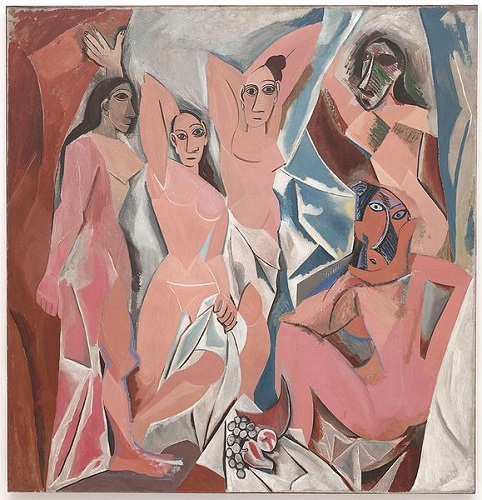
2. “Guernica” (1937) – Talvez a obra mais famosa de Picasso, “Guernica” é uma resposta aos horrores da Guerra Civil Espanhola. A pintura mostra o bombardeio da cidade basca de Guernica e sua devastação, simbolizando a crueldade da guerra e os sofrimentos humanos.
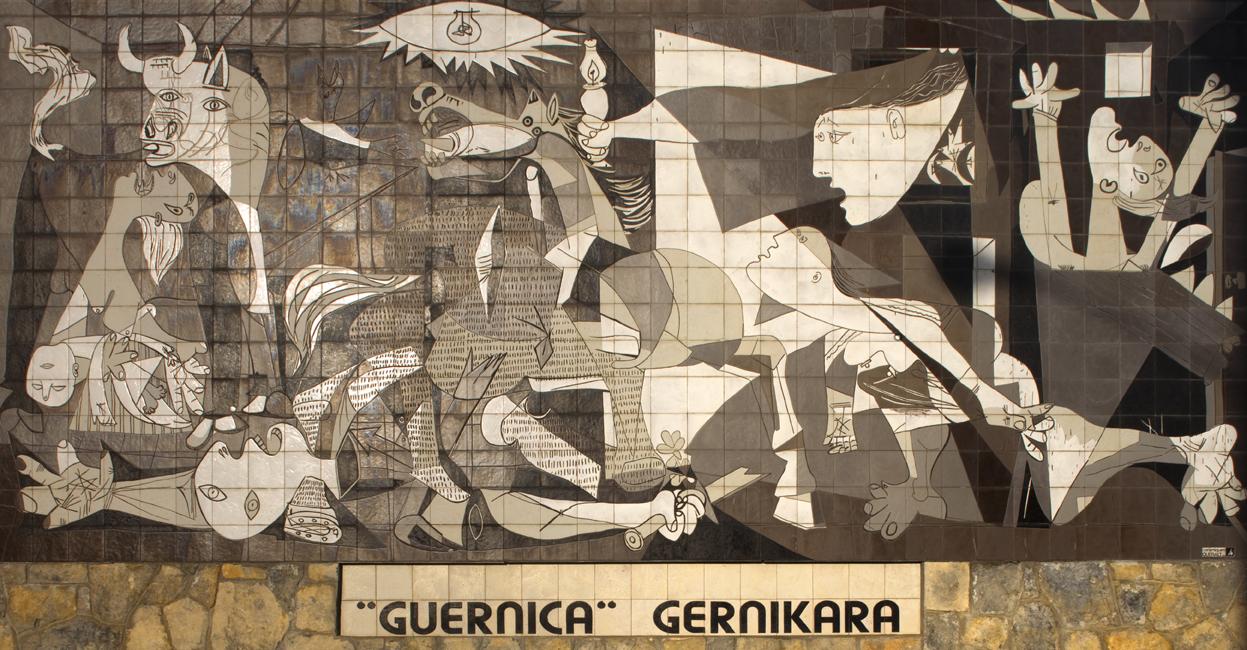
3. “A Mulher que Chora” (1937) – Esta pintura é uma expressão poderosa da dor e do sofrimento humano. Picasso retratou uma mulher chorando com o corpo distorcido e angustiado, tornando-a um símbolo duradouro de tristeza e angústia.
4. “Les Noces de Pierrette” (1905) – Essa obra-prima retrata uma garota em meio ao luto. A pintura é um exemplo brilhante do estilo azul de Picasso, caracterizado por uma paleta de cores frias e melancólicas.
Essas são apenas algumas das obras mais famosas de Picasso, cada uma com sua própria história intrigante e impactante. Fique ligado para descobrir mais sobre essas obras e suas curiosidades!
6. Histórias curiosas sobre Picasso
Além das suas obras icônicas, a vida de Picasso também é repleta de histórias curiosas que adicionam um elemento de fascínio à sua trajetória artística. Uma dessas histórias envolve a pintura “Les Demoiselles d’Avignon”. Quando Picasso mostrou a obra para seus amigos, um deles chamou-a de “coisa terrorista”. Apesar dessa reação inicial negativa, a pintura acabou se tornando uma das mais importantes da história da arte.
Outra história interessante é sobre a pintura “Guernica”. Durante a Segunda Guerra Mundial, Picasso foi abordado por um oficial nazista que, ao ver uma foto da pintura, perguntou: “Você fez isso?”, ao que Picasso respondeu: “Não, você”. Essa resposta demonstra a mensagem poderosa e política por trás da obra.
Essas são apenas duas das inúmeras histórias curiosas que cercam a vida e a obra de Picasso. Fique atento para aprender mais sobre essas intrigantes narrativas e para descobrir onde você pode ver suas obras em exposições e museus ao redor do mundo.
Melhores locais para ver arte em São Paulo
1. Introdução
São Paulo, Brasil, é reconhecida internacionalmente por seu vibrante cenário artístico e cultural. Com uma infinidade de museus e galerias, a cidade oferece uma infinidade de oportunidades para mergulhar em obras de arte requintadas. Quer você seja um entusiasta da arte ou simplesmente queira explorar a rica herança cultural de São Paulo, este artigo destaca os melhores museus e galerias públicas para visitar. De instituições renomadas a joias escondidas, descubra os principais locais para ver arte em São Paulo abertos ao público.
2. A importância dos museus e galerias de arte em São Paulo
A importância dos museus e galerias de arte em São Paulo
Os museus e galerias de arte desempenham um papel fundamental na vida cultural e artística de São Paulo. Além de fornecerem um espaço para admirar obras de artistas renomados, eles também desempenham um papel crucial na preservação e divulgação da história e cultura da cidade.
Essas instituições oferecem uma oportunidade única para os visitantes explorarem diferentes períodos artísticos, desde o clássico até o contemporâneo. Além disso, os museus e galerias de arte em São Paulo também servem como plataformas para exposições temporárias e eventos, trazendo novas perspectivas e tendências para o público.
Ao promover e valorizar a arte, esses locais contribuem para o desenvolvimento cultural e educacional da cidade, incentivando a criatividade e o diálogo entre artistas e espectadores. Portanto, ao visitar os melhores museus e galerias em São Paulo, você está imerso em uma experiência enriquecedora que vai além da mera apreciação estética.
3. As melhores opções de museus públicos e galerias em São Paulo
São Paulo é uma cidade rica em opções quando se trata de museus públicos e galerias de arte abertos ao público. Aqui estão algumas das melhores opções para quem deseja admirar e se inspirar com obras de arte de renomados artistas:
– Museu de Arte de São Paulo (MASP): Reconhecido internacionalmente, o MASP abriga uma vasta coleção de arte europeia, brasileira, africana e asiática. Além das exposições permanentes, o museu também oferece mostras temporárias e eventos culturais.
– Pinacoteca de São Paulo: Localizada no histórico prédio da Estação da Luz, a Pinacoteca é um dos museus mais antigos da cidade. Seu acervo conta com mais de 11 mil obras, incluindo pinturas, esculturas e fotografias de artistas brasileiros e estrangeiros.
– Instituto Tomie Ohtake: Fundado para homenagear a artista japonesa Tomie Ohtake, o instituto promove exposições de arte contemporânea, arquitetura, design e cultura brasileira, além de oferecer cursos e workshops.
Esses são apenas alguns dos incríveis museus e galerias de arte que São Paulo tem a oferecer. Se você está em busca de uma experiência cultural única, não deixe de visitar esses locais e descobrir o incrível mundo da arte em São Paulo.
4. Experiências únicas em cada local
Cada um dos museus e galerias mencionados anteriormente oferece uma experiência única para os visitantes. Ao explorar o Museu de Arte de São Paulo (MASP), por exemplo, você terá a oportunidade de admirar obras-primas de grandes mestres da pintura europeia, como Van Gogh, Monet e Picasso, além de se encantar com a arquitetura icônica do edifício.
Já na Pinacoteca de São Paulo, além de apreciar a vasta coleção de arte brasileira e estrangeira, você poderá vivenciar o charme histórico da Estação da Luz, onde o museu está localizado. A combinação de arte e história faz desse local uma experiência enriquecedora.
No Instituto Tomie Ohtake, você terá a chance de mergulhar no emocionante mundo da arte contemporânea brasileira. As exposições inovadoras e multifacetadas apresentadas neste instituto são uma oportunidade única de conhecer novas tendências artísticas e se inspirar com a criatividade dos artistas modernos.
Ao visitar esses locais em São Paulo, você terá a certeza de vivenciar experiências únicas, mergulhando no mundo da arte e da cultura. Cada museu e galeria oferece uma oportunidade de aprendizado e enriquecimento pessoal, deixando uma marca duradoura em sua jornada.
5. Dicas para visitar os museus e galerias abertos ao público
Para aproveitar ao máximo sua visita aos museus e galerias de arte em São Paulo, aqui estão algumas dicas valiosas:
1. Planeje seu itinerário: Com tantas opções, é importante definir quais museus e galerias você deseja visitar. Verifique os horários de funcionamento e se há exposições temporárias que possam interessar.
2. Aproveite as visitas guiadas: Muitos museus oferecem visitas guiadas gratuitas ou por um custo adicional. Essas visitas podem fornecer informações detalhadas sobre as obras de arte, a história do local e curiosidades interessantes.
3. Verifique as políticas de fotografia: Algumas instituições permitem fotografar as obras de arte, desde que sem flash e para uso pessoal. No entanto, outras podem ter restrições. Certifique-se de verificar as políticas de cada museu antes de fotografar.
4. Reserve tempo suficiente: Os museus e galerias de São Paulo geralmente são grandes e repletos de obras importantes. Reserve tempo suficiente para explorar todas as exposições e apreciar cada detalhe.
5. Esteja aberto para descobertas: Embora seja bom ter uma lista de obras de arte que você deseja ver, também esteja aberto para descobrir novos artistas e estilos. Às vezes, as maiores surpresas vêm de lugares inesperados.
Seguindo essas dicas, você estará pronto para desfrutar ao máximo da sua visita aos museus e galerias de arte em São Paulo. Aproveite a riqueza cultural que a cidade tem a oferecer e permita que a arte inspire e enriqueça sua vida.
6. Reconhecimento internacional da cena artística em São Paulo
A cena artística de São Paulo é reconhecida internacionalmente pela sua diversidade, qualidade e inovação. A cidade abriga uma série de museus e galerias que são considerados referências no mundo da arte contemporânea.
O Museu de Arte de São Paulo (MASP) é um dos museus mais famosos da cidade e conta com uma vasta coleção de arte ocidental, desde a antiguidade até os dias atuais. Sua icônica arquitetura suspensa é um atrativo à parte.
Outra instituição de destaque é o Instituto Tomie Ohtake, que abriga exposições de artistas nacionais e internacionais, além de promover eventos e debates sobre arte contemporânea.
Além disso, São Paulo é conhecida por sua vibrante cena de arte de rua, onde artistas locais e internacionais transformam os muros da cidade em verdadeiras galerias a céu aberto.
Visitar esses locais é uma oportunidade única para conhecer e se inspirar com o talento dos artistas brasileiros e estrangeiros que contribuem para a cena artística de São Paulo.
7. Conclusão e convite para explorar a arte em São Paulo
Para os amantes da arte, São Paulo é um verdadeiro paraíso. Ao longo deste blog, apresentamos alguns dos melhores museus e galerias da cidade, que são reconhecidos internacionalmente pela qualidade e diversidade de suas coleções. O MASP, com sua arquitetura icônica e vasta coleção de arte ocidental, e o Instituto Tomie Ohtake, que promove exposições e debates sobre arte contemporânea, são apenas alguns exemplos desses locais imperdíveis.
No entanto, a cena artística de São Paulo vai muito além desses espaços. A cidade é conhecida por suas galerias de arte independentes, suas exposições temporárias e, é claro, sua arte de rua vibrante. Convidamos você a explorar e descobrir ainda mais sobre a arte em São Paulo, seja visitando os museus e galerias mencionados neste blog, ou simplesmente caminhando pelas ruas e apreciando as obras de arte que enfeitam a cidade. Com certeza, você encontrará inspiração e descobrirá novos talentos nessa metrópole cultural.
MICHELANGELO, the greatest counterfeiting genius in Art History
by Arthur Blade
Thousands of people stroll through Ibirapuera Park in São Paulo every day, thousands go to exercise, take their dogs, take their children, and often do not even notice the sculpture in the photo below. It is a bronze copy of the sculptural group Laocoonte that is in the Pio-Clementino Museum, in the Vatican, and that was made by the Lyceum of Arts and Crafts of São Paulo. The statue has been there since 1954, when the park opened.
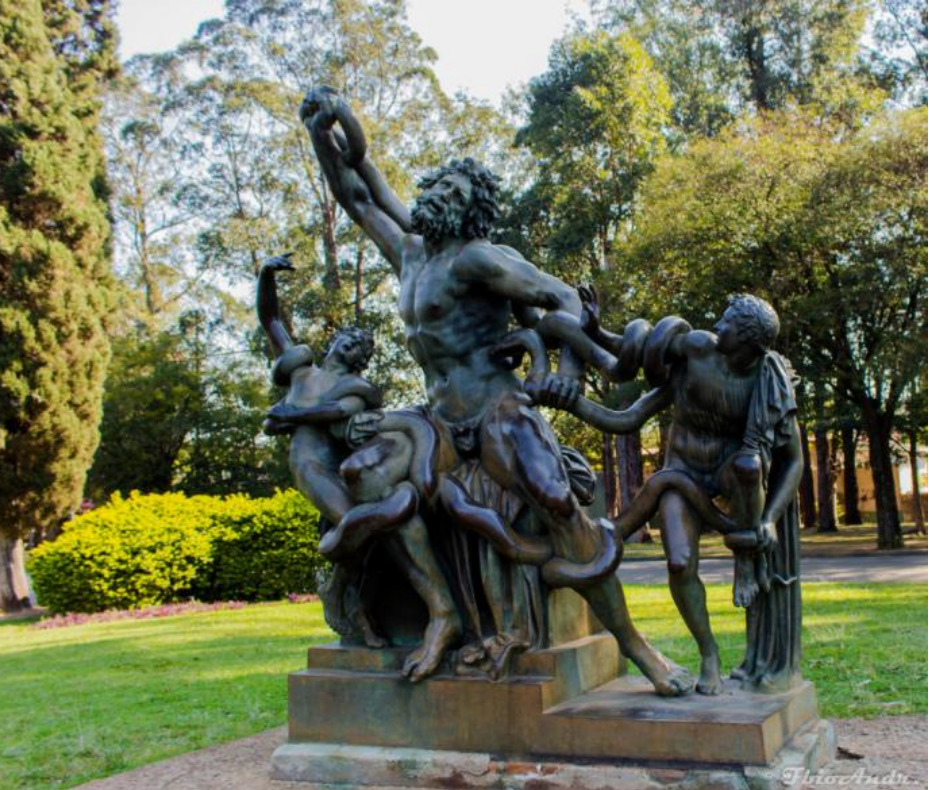
Well, people walk around Ibirapuera, many even take selfies with the Laocoon tearing themselves apart in pain, but the vast majority have no idea of the great epic adventure that is behind this sculpture.
At the beginning.
Caio Plínio Segundo (23 - 79), also known as Plínio the Elder, was a Roman naturalist. He is known to have written a great treatise in 37 volumes called: Natural History. In this work, he reveals a very high encyclopedic degree of knowledge dealing with the most varied sciences and arts until then under development. In one of his passages, in volume 36, he reports:
“… This is the case of the Laocoonte group, for example, in the palace of Emperor Tito, a work that can be considered preferable to any other production of the art of painting or [bronze] statuary. It is sculpted from a single block, both the main figure and the children, and the snakes with their wonderful folds. This group was made together by three of the most eminent artists, Agesandro, Polidoro and Atenodoro, native to Rhodes. ”
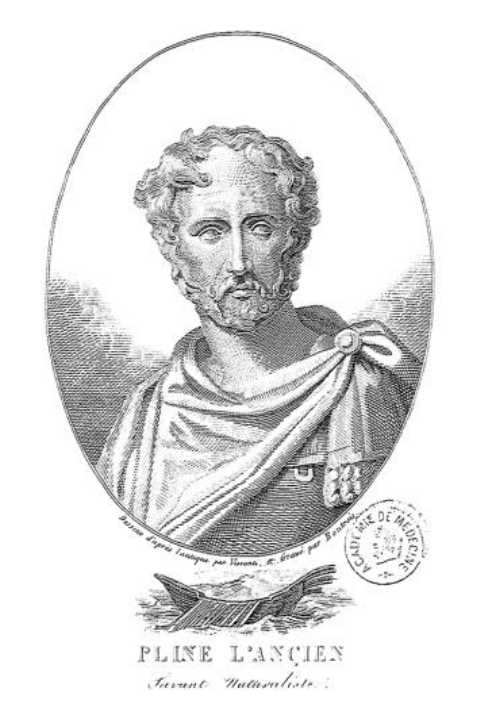
This reference was everything that scholars and artists of Michelangelo's time had about this statue. Plínio does not report the time when it was made or who ordered it. For about 1400 years the name Laocoonte, linked to the sculptural group, simply disappeared from history, until…
1506 - the year of the discovery of an icon
On January 14, 1506, the Roman Felice de Fredi, owner of a vineyard near the ancient Termas de Tito, when excavating his land for planting, finds a statue. At that time, the height of the Renaissance, classical sculpture was highly valued, Felice immediately sent for Giuliano de Sangallo, the architect of Pope Julius II and the main authority when it came to antiques and their authenticity.
It is at that moment that one of the great coincidences of history occurs, when Giuliano is warned, in the middle of lunch, guess who was in his company? Yes, Michelangelo was your guest for lunch that day. They then set off towards the discovery site. Alongside them was Giuliano's 11-year-old son, Francesco da Sangallo, who would become a sculptor and, sixty years later, would narrate the event:
“… Então ele partiu imediatamente. Visto que Michelangelo Buonarroti sempre podia ser encontrado em nossa casa, pois fora contratado para o túmulo do Papa Júlio II, meu pai quis que ele também fosse. Juntei-me ao meu pai e lá fomos nós. Eu desci até onde as estátuas estavam quando imediatamente meu pai disse:“Esse é o Laocoonte, que Plínio menciona.”
On the ground that was then largely excavated, they found several parts of the sculptural ensemble, which can be seen in the photo below:
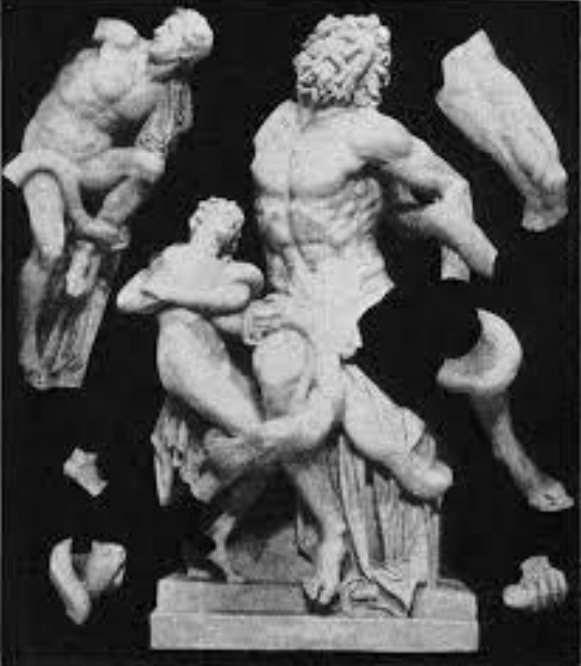
Pope Julius II, a passionate classicist.
The value of authentic antiquity was very high. Pope Julius II, a great admirer of classical culture, immediately bought it for the amount of 4,140 ducats, Felice de Fredi still received a lifetime pension of 600 ducats a year and, on dying, his discovery is mentioned on his tombstone.
An enigmatic statue like a sphinx.
As you can see, some parts were missing. Laocoonte's right arm was absent, in addition to the hand of one of the sons and the right arm of the other, as well as parts of the snakes.
Na época, os artistas e demais autoridades debateram sobre como seriam as partes faltantes para se fazer uma reconstituição. Michelangelo sugeriu que o braço direito de Laocoonte estaria virado para trás. Já a imensa maioria, entre eles o próprio Rafael, acreditava que o braço estaria esticado em sinal de grande heroísmo. Em 1510, Bramante, arquiteto do Papa, organiza uma votação entre os principais artistas para decidir se o braço direito está estendido ou inclinado para trás. O primeiro vence e uma cópia é assim feita restabelecendo-se aquelas que seriam as partes faltantes. A gravuraabaixo, de Marco Dente, de cerca de 1515-27, reflete o conjunto sem os acréscimos.
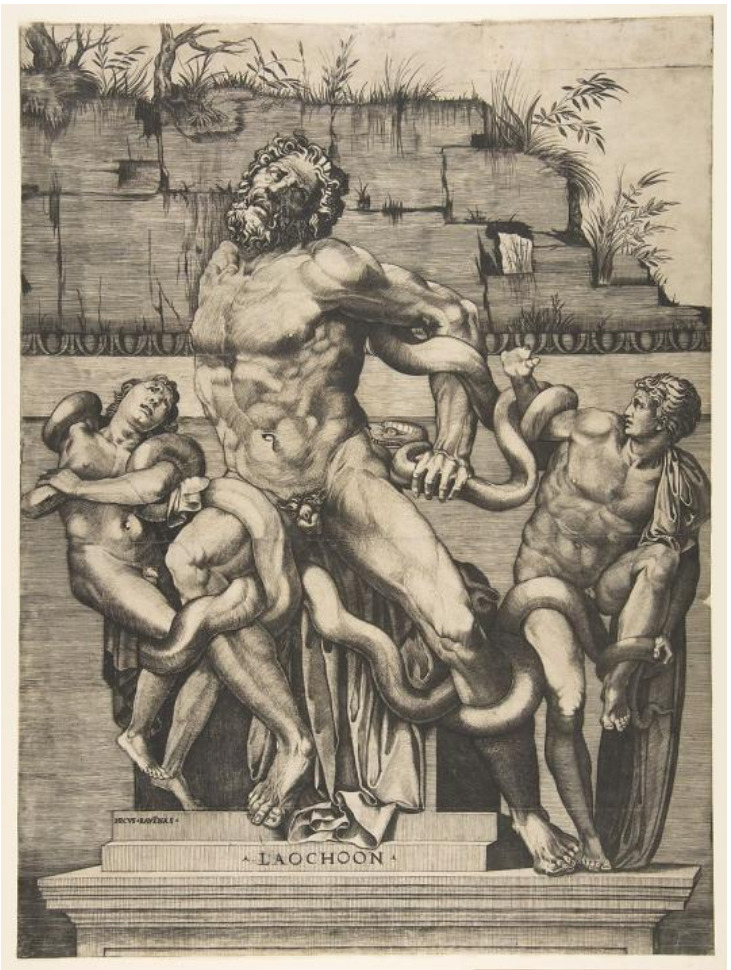
In this other engraving by Nicolas Béatrizet, from about 1535-65, there are the additions that were believed to exist in the original work, or that, at least, approached what would be the first work:
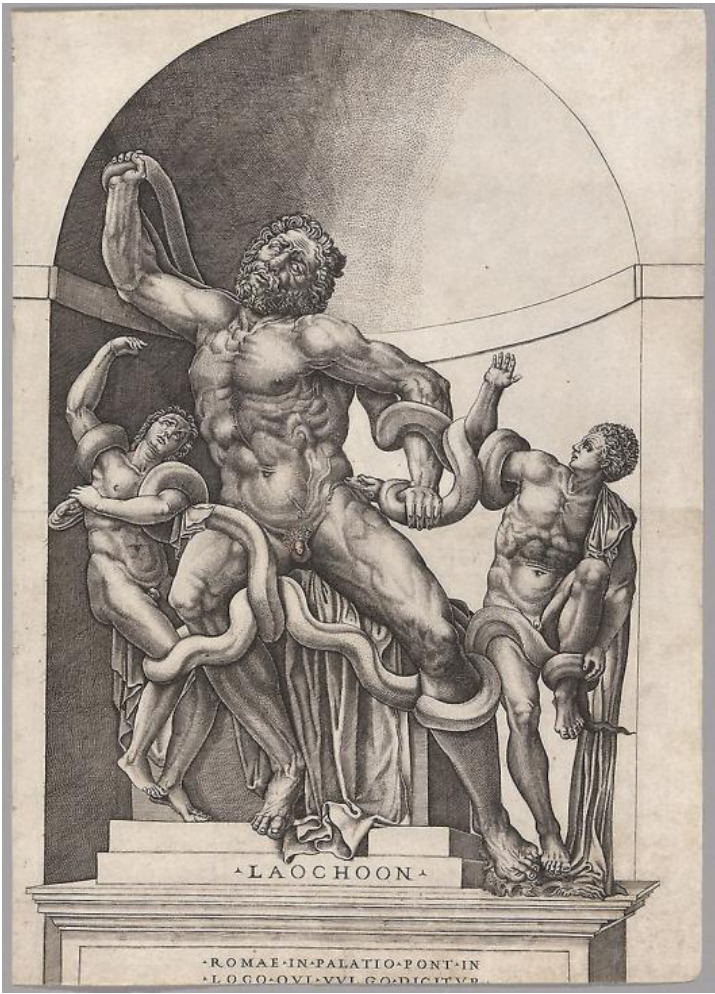
The impossible happens
In 1906 something happened that would be absolutely impossible. Something that anyone, with the slightest sense of probability, would say is more difficult than winning the lottery. Well, in 1906, the archaeologist and art dealer, Ludwig Pollack, entered Art History as the one who found Laocoonte's right-hand man. He found the arm fragment on the ground of a construction company near where the main parts of the work were found.
There are no details on how he found this part of the statue, the fact that adds to the improbabilities is that Pollack realized that it could be Laocoonte's arm, at a time when this matter was more than closed. That is, 400 years after the discovery of the main group, the arm is found. But he needed analysis, so he donated to the Vatican to get the study started again.
Four hundred years have passed. 1506 - 1906
In those 400 years, the sculpture had already undergone a true saga, had already undergone some restorations, because of the Napoleonic invasions it was taken to the Louvre as a loot, afterwards, with the loss of the Battle of Waterloo, it returned to Italy and, at the beginning of the 20th century, it was restored and with the missing parts added to the original work. So it was not enough to just put Pollack's arm next to the original sculpture, to see if it was Laocoonte's right arm.
And there go another 50 years
It was only in 1957 that the direction of the Vatican Museums decided to add the arm to the trunk of Laocoon. In the next photo you can see that they fit perfectly and that the conservation of the arm suffered the action of 400 years that separated it from the work to which it belonged.
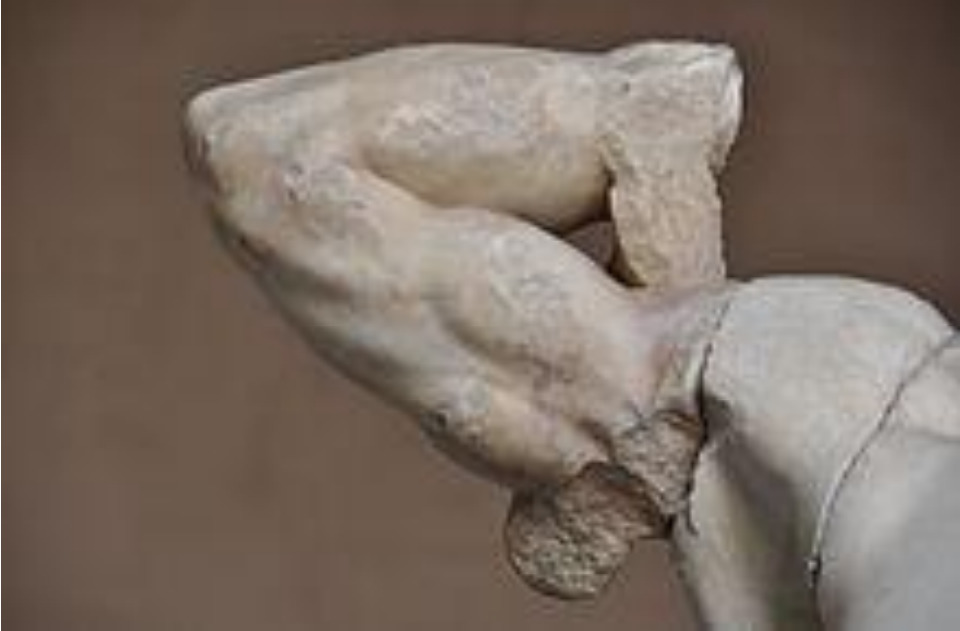
And that is why the replica of Ibirapuera Park has its arm extended, because it was made before 1957. And it was only in the 1980s that the added parts were completely removed and so the statue remained as it is now, only with the original parts:
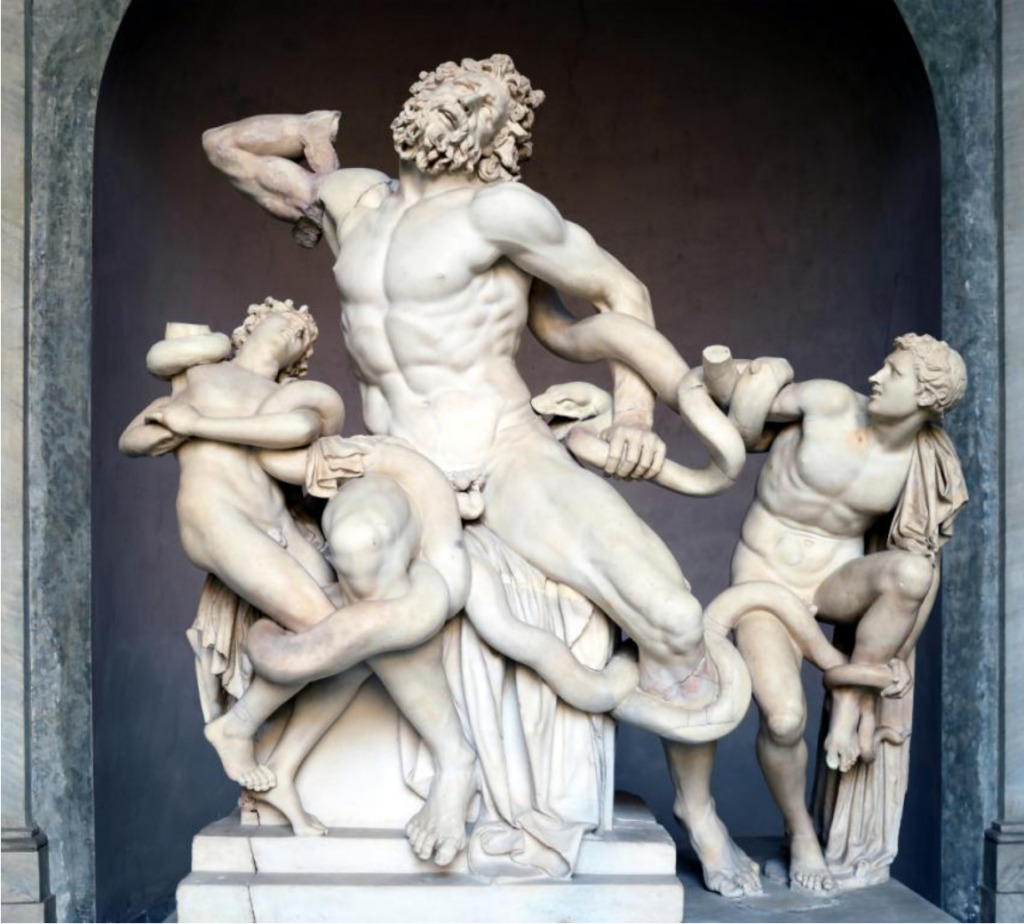
The great doubt
Between the lines of Michelangelo's biographies, there are those who maintain that it was he who sculpted the sculptural ensemble Laocoonte, and that, with his friend, Felice de Fredi, agreed to bury it, pass the work through antiquity, and thus obtain a large sum with the sale to Pope Julius II who would certainly buy it.
The coincidences are neither small nor small. Michelangelo was having lunch with Giuliano da Sangallo when news of the discovery of the sculpture appeared and he may be one of the first to arrive at the site. Then, when all the greatest artists of the time thought that the missing arm would be extended, Michelangelo gets up and says that he would be turned back, and 450 years later we realized that he was absolutely right.
The Sleeping Cupid
Another fact supports this hypothesis. There is a small statue of Sleeping Cupid, which today is lost, sculpted by Michelangelo in 1496, only that he aged it to pass through antiquity and sold it to an art dealer who, in turn, sold it to Cardinal Riario de San Giorgio. When the fraud was discovered, the Cardinal not only wanted to continue with the statue but also invited Michelangelo to go to Rome, where he would have his first orders for those that would be great masterpieces of humanity. He was 21 years old and this little forgery, this making a statue pass as antiquity using artifices like burying to look old, dealing with small scratches, producing small broken parts, may have made all the difference for him if project in the artistic universe of the time.
My own version
Laocoonte by Arthur Blade
Michelangelo, por volta de 1506, já era considerado “il divino” por esculturas como Baco, Pietá e David, sua fama já era notória, nãoprecisaria de dinheiro para se manter, nem muito menos, se tivesseesculpido ele mesmo o grupo Laocoonte, deixaria de mostrar seutalento falando a todos que foi o autor.
So what could have happened?
And this is where my own version of the story comes in.
Michelangelo conhecia a descrição do grupo escultórico Laocoontefeita por Plínio, com certeza teria ficado com isso em mente e logo começaria a conceber como teria sido esta estátua. Michelangelo então, em segredo, começa a esculpir aquela que seria sua primeira composição com três personagens, um verdadeiro virtuosismo em um único bloco de mármore.
However, something inevitable happens, when the work is finished, when it is in the details of polishing the parts of the statue, a tiny crack in the marble and ... and part of the work accidentally breaks. This completely destroys him, he would never have a work that, even if well patched, would not satisfy him personally. He also knew that his enemies would use this detail to slander him. In addition, it would no longer be a statue made of a single marble block, as Plínio emphasized. It was all over.
He then works out an audacious plan with his friend Felice de Fredi, asks him to break the statue in parts (Michelangelo would never be able to break a masterpiece of humanity himself), then disappear with some small parts, make some scratches, age best possible way and bury in Felice's vineyard. The continuation of the story we already know.
The truth is yet to be unearthed.
The critics' position is still controversial, some still believe that Laocoon is the original Greek statue with uncertain dates; others say it is a copy of a Greek bronze statue from the 11th century BC that did not reach us; there are also those who say that it is not a single marble block, in short, the truth will remain buried forever.
Michelangelo, the greatest counterfeiting genius in art history
My version is absolutely plausible, marble is a material that breaks easily, Michelangelo, with his strong temperament, may well have followed the steps I mentioned.
And if that really happened, Michelangelo presented us with masterpieces such as Pietá, David, the ceiling of the Sistine Chapel, the Fresco of the Last Judgment, the Moses and… that which is the maximum masterpiece of the Greek statuary, the sculptural ensemble of Laocoon. And on top of all his genius, Michelangelo smiles for having convinced everyone that Laocoon is a Greek statue, he even matched the Greeks.
Michelangelo, the greatest counterfeiting genius in art history.
PorArthur Blade
The painted word, the culturati and the Apache dance
I used to be a Buddhist, I already wandered towards atheism, but I settled in the Catholic region. I was an ascetic for 2 years, didn't eat meat, didn't drink, didn't smoke and didn't even listen to music. All this belief collapsed when I got sick at the gym, I had a pressure drop that made me see only white light and turn green. Had it not been for the personal trainer, perhaps the worst would have happened.
I am against the exacerbated ego, the self-title and, despite studying it, I am not a fan of the occult. I left Buddhism simply because I had to transcend some of the values, especially the lack of ambition. I've done some business, and I stopped creating others, including “The Book Club”. It was supposed to be a book club, started in Brazil and with international ambitions ... There was already Good Reads, and I didn't even get the domain, and I ended up quitting. I am also not the greatest reader.
But, perhaps out of boredom, you're reading more. I started reading “The Painted Word”, by Tom Wolfe, the same writer of “Bonfire of the Vanities” with a blog post in mind. That way, I would notice the relevant observations ...
Returning to the fascinating “The Painted Word”, the book begins with a genius tirade, which is the need for text on art, to justify art. Modern art, according to Wolfe, does not exist without a text explaining it. Text ceases to exist because of art, for art to exist because of it. The book is a satire on 20th century art circles in New York. "Modern art has become completely literary: paintings and other works exist only to illustrate the text", he prophesies.

Tom lampoons both Downtown, or Soho and New York's adjacent regions, such as Upside, and characterizes the “Apache dance”. Downtown artists live to hang out and play a real seduction game with Upside, the galleries and financial elite. In this game, the artists despise the hubbub and opulence of the elites, from the top of their bohemian lives, and await the advance of the culturati, choosing the artists of the time. As Wolfe tends to criticize elites much more, the movement of Boho Dance (1 and Consummation (2) is marked by the following phrase from Andy Warhol:
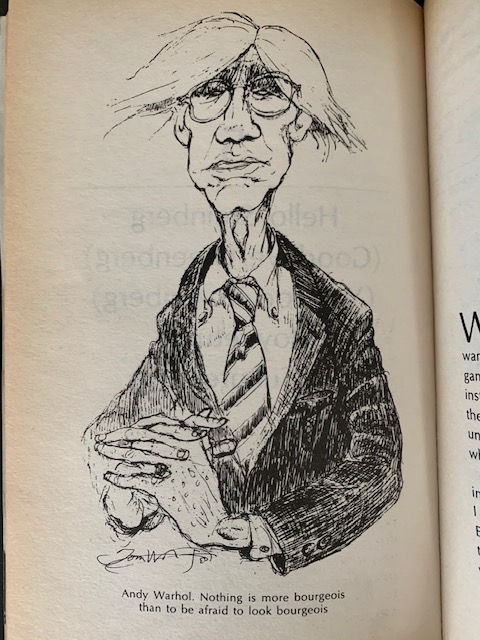 “Nothing is more bourgeois than to be afraid to look bourgeois”
“Nothing is more bourgeois than to be afraid to look bourgeois”The book also chronicles incredible epics such as the sponsorship of Jackson Pollock by Peggy Guggenheim, and the day Pollock went to one of his parties, completely drunk, went into a room in the residence and left naked, to urinate at the fire in front of everyone . Pollock is one of the highlights of the book, as it fulfilled the 2 stages of Apache Dance but initially was not financially successful. Personally I found it super interesting that he sold ties painted by himself in 1943, which my grandfather, Manabu Mabe did and that led him to be attacked by a character from the soap opera “Cobras e Lagartos”… She talks about ties and tears up her canvas. But if Pollock does it in New York, instead of downtown São Paulo, it is praiseworthy, even for Tom Wolfe.
During the cubist and later abstract series of the book, another highlight is Picasso. He completed the 2 phases of the Apache dance and left 2 of his peers behind, André Derain and Georges Braque. It is evident that in Wolfe's opinion, Picasso was not artistically superior to 2, but rather more competent in performing the true mating dance that he proposes to exist in the world of the arts, in his book.
Starting from Picasso, Wolfe talks about the critics and how the theory of Art became important afterwards. Steinberg would later propose the theory of flatness or flatness. In it, the paintings must be incorporated into the media, the canvas, with no centimeter of ink remaining above them. It was in force for a long time and John Jasper and Jackson Pollock were its exponents. I found it very interesting because it resembles Lygia Clark, and one of Jasper's first main themes was flags. And look what I did a few months ago, for the cover of my personal Facebook, it is not a flag:
 Joh Mabe - Untitled
Joh Mabe - Untitled Jasper Johns's 'Flag', Encaustic, oil and collage on fabric mounted on plywood, 1954-55
Jasper Johns's 'Flag', Encaustic, oil and collage on fabric mounted on plywood, 1954-55I'm only over 50 years old. After flatness, Pop Art emerged. Because people didn't really like modern or abstract art, nor did they buy, or if they bought, they didn't necessarily like it. And as soon as they had the opportunity, they were converted to that movement, whose exponent was Warhol and Roy Lichtenstein. They did not fit as realistic because Roy's love and war comics and Warhol's soup cans were commonplace symbols of American culture. The symbolic reference drained the realism of the works. Pop-art, claims Tom, had numerous literary references and, secretly, the culturati he returned to appreciate realism.
Tom ends the book with the rise of minimalist art, which appeared full of theorization and was based on effects and optical illusions.
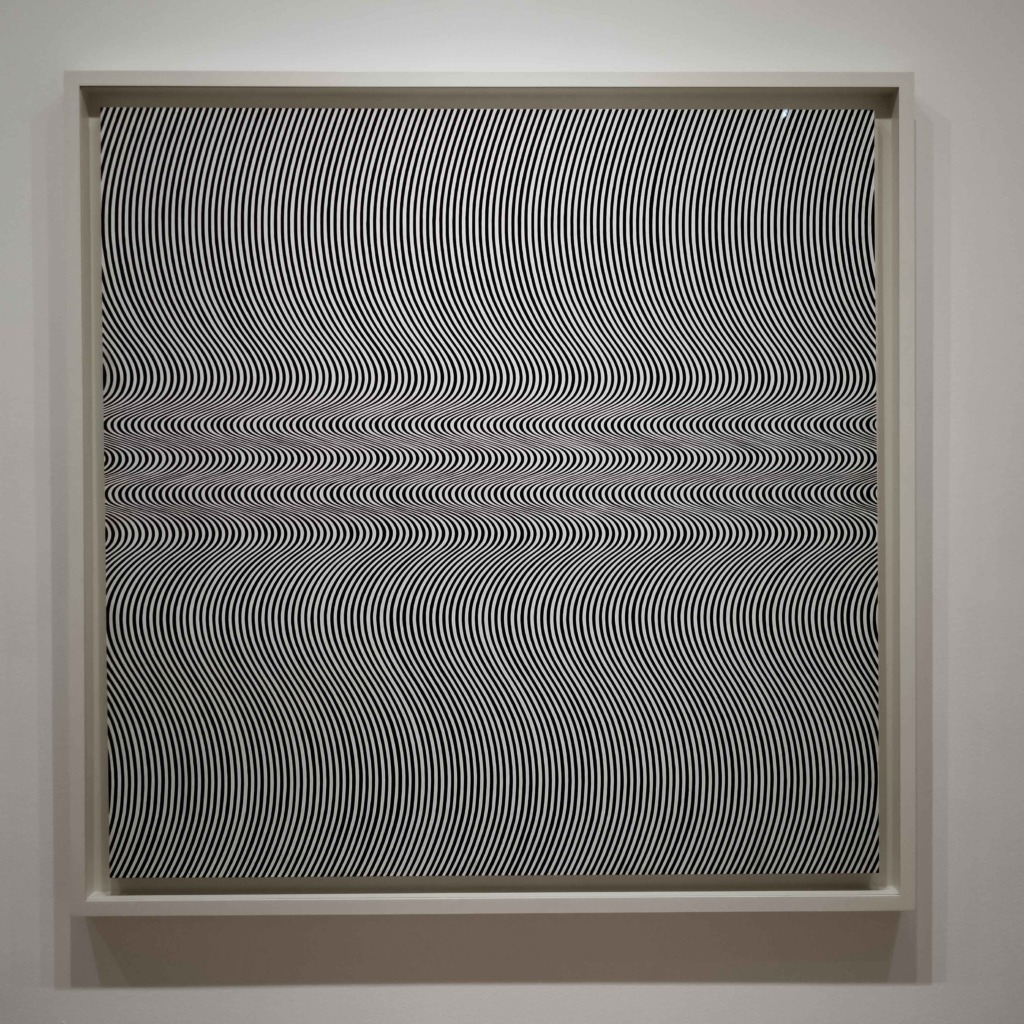 Bridget Riley. Current (1964) smallcurio from Austin, TX / CC BY (https://creativecommons.org/licenses/by/2.0)
Bridget Riley. Current (1964) smallcurio from Austin, TX / CC BY (https://creativecommons.org/licenses/by/2.0)Cubists, realists and impressionists represented on their screens the impressions of the illusions they saw; modern abstractionists made their paintings truly autonomous objects; the minimalistists completed the cycle making their works a piece of pure perception.
The conclusion at the end is that text and theorization came to prevail in art, hence the book's title, The Painted Word.
A more modern interpretation of what Tom Wolfe prophesied and experienced is represented in "The Square - The art of discord"movie Rubem Ostlund, a comedy that criticizes the dichotomy between the works of the Swedish modern art museum and the reality outside it. The art in the film is portrayed several times, hindering communication between the characters. It also brings several ideas about the limits that art and artists and participants must have.
That’s it for today, Tom Wolfe’s books are worth reading, again, he’s more famous for Vanity Bonfire, the books are very well written but for those who do not have much patience to read, there is the film.
Cultural references to pandemics
The bubonic plague, which happened mainly in Europe in the Middle Ages, and lasted until the 19th century, influenced society a lot. It preceded the Renaissance and has references both in Divine Comedy, by Dante, as Decameronby Giovanni Bocaccio. But, perhaps the greatest impact was on religion, which suffered a sharp decline, as people could not be saved by the Church and interpreted the plague as divine punishment.
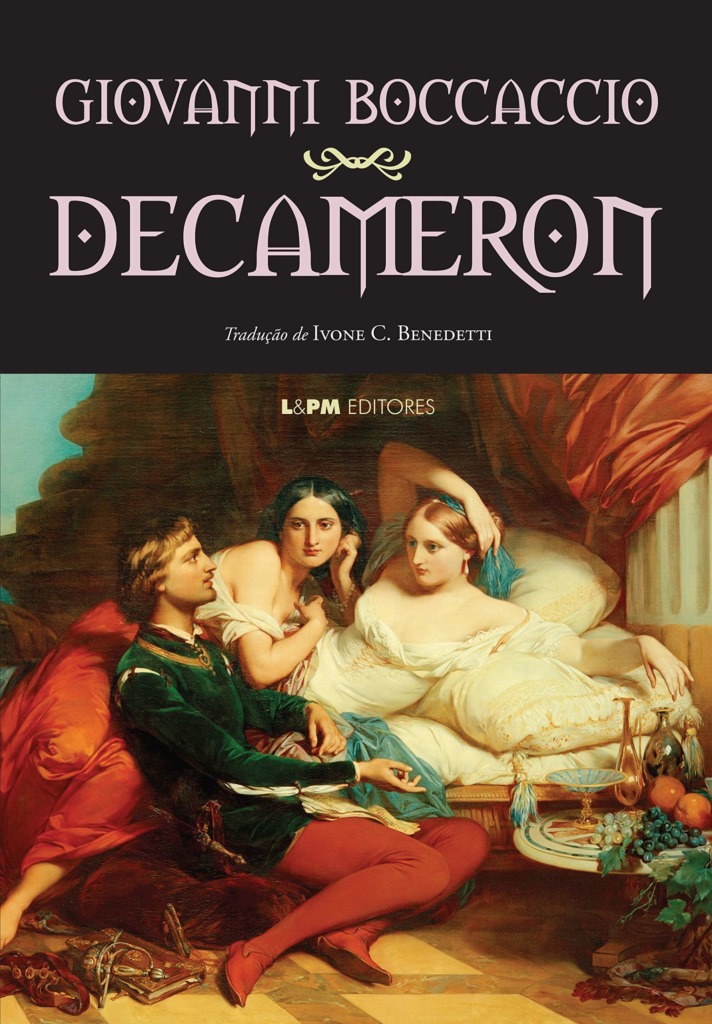
Currently, with Covid-19, in the mild way it is reaching Brazil, for now, 11 thousand cases until today, many interpret it as a gift, in the sense that God would be guiding us to value family life, nature, or perhaps punishing us for the materialistic, selfish and insensitive directions that society has taken. Or even for the libidinosity that predominates in our society, the total trivialization of interpersonal relationships.
But since the virus appeared, I followed and tried to remember some cinematic references. Something had already shown how catastrophic a virus would be, and it was not a gift ...
In 12 Monkeys, Bruce Willis is sent from the future to seek information on the cure of a virus that extinguished the human population in 1996. Contagion, by Steven Soderbergh is one of the most watched films after Covid-19, but it was inspired by SARS.
It was not yet what I was looking for, there was some more reference that I would be forgetting ... Tom Hanks and his wife caught the virus in Australia and I remembered that one of Dr. Robert Langdon's films possibly dealt with a biological plague. Yes, in Hell, from Dan Brown's book, a billionaire eccentric implies population control and decides to create a virus in a laboratory. It is up to Langdon to prevent the use of biological weapons in the world. The film begins in Florence, Italy, one of the places most affected by the current epidemic.

References to Dante's Inferno are very present in the film and the difference is that in reality, the virus does not appear to have been the work of humans, but rather an accident in a Chinese market.
The main objective of this text is to indicate some cultural options for those at home in the quarantine, and to bring this indication of the film Inferno, and of the book, of course. I read a lot about Covid-19 and didn't see anyone talking about that movie.
Also, with these indications, open the chance for everyone to question the origin of the virus. Because, in the film, it is said that governments would always be interested in biological weapons. And why not, an eccentric billionaire? Recalling that “A wise man conditions his beliefs to the evidence”, as David Hume said

Well, I hope you enjoy it, and if you take care, the virus is dangerous for all of us and we need to follow the recommendations for care and hygiene that are being passed on to us.
I Child Play Stage 2 in partnership with the Ribeirão Preto Arts and Letters Academy
AI Art Exhibition Child's Play & ALARP (Academia de Letras e Artes Ribeirão Preto) aims to raise awareness in society about the importance of old children's games (ex. Job, playing wheel, jumping rope, etc.) for children's biopsychosocial development. And warn that the early use of cell phones and the abuse of digital games and social networks are changing the shape of interpersonal relationships. Communication and affection in homes are decreasing, as people (children, teenagers or adults) are currently staring at their “digital toys” for hours, interacting with the world around them in a monosyllabic way.There is unanimity among doctors, educators and psychologists that the old games develop more creative and healthy adults, from a social and emotional point of view. And that they promote socialization, stimulate the senses, imagination, team spirit, healthy competition and learn to deal with rules.
I am of the generation that having parents present, a pet and friends to play outdoors was all I needed to be happy. I did not have a life of luxury, on the contrary, but I say, with all the certainty of my heart, that the phase of my seven to 12 years old was the happiest of my life. I lived unforgettable moments and I have many stories to tell.
Maria José Gonçalves Oliveira
This Exhibition is being held from 11/28 to 12/20/19 at Centro Cultural Palace - Ribeirão Preto. The curatorship is by Luciane Lima (Ateliê L.Lima) and Miguel Angelo.
Click on the link below to watch the video q shows the artists and some of the works that are participating . Also subscribe to the channel https://youtu.be/zVwTve940cg PRESTIGIEM, because child's play is a serious thing!
https://www.instagram.com/tv/B4U8Q39Ay2c/?igshid=40601uqeizss
PARIS Salon International D'Art Contemporain Carrousel du Louvre held from 18 to 20/10/19
Paris, a city so special for art, every artist's dream. The exhibition called Salon International D'Art Contemporain Carrousel du Louvre is held in a luxurious commercial gallery located in the well-known Musée du Louvre. In this space there are exhibitions with works of painting, photography and other forms of contemporary artistic expression, enabling the exchange of experiences between exhibiting artists from different parts of the world. For this International Exhibition I painted the painting “Praia das Moças em Buzios” - AST - dimensions: 50 x 70 cm, the same being awarded in the Creativity modality.
Joker (or Joker) is art
I am expected to give my political view here. For various reasons ... An art platform that promotes, in addition to your works, content written about art. I have everything prepared, but I didn't publish it.
In the meantime, I was fascinated by the new Joker movie. To the point of going to watch it, alone, on Friday. And, why not talk about a new film, if this is an art platform? Everyone wants to talk about the Joker. In the review aggregator that I follow, the average score among professional critics is 56 at the moment, and among viewers, it is 92.
I haven't watched many films. Following the Joker I packed Mystery in the Mediterranean and I realized why I haven't seen many in the last few years. But let's get back to the Joker.
If mr. or mrs. did not watch the film, it is better to stop reading here. I reserve the right to reveal spoilers, or parts of the films, only to those who watched it.
Joker, in my opinion, is a very good film. In many ways. I, alone in the cinema, was stuck and moved from the beginning. Rare were the times that any type of art aroused so much emotion. Perhaps because of the character's history, which also includes Heath Ledger, who committed suicide. Perhaps because of the film's brilliance, now pruned by media outlets and professional critics.
I researched all the material a lot before going to watch. He even knew that there could be an attack while watching. And it was a little tense, yes ... But no, humanity is smarter than that. It is even the motto of the film. I will no longer obey the ruling class, media, or agenda. An attempt on a Joker debut, perhaps, is what those in power expect from us, ants, or mere mortals.
Besides emotion, what is so great about the film? Well, the subway scene is something that makes us think about cinema photography. Here, I say, before watching the other Oscar candidates, that if Joker doesn't win the Oscar for photography, there is something wrong in Hollywood.
Cinema is made of clichés, to make us identify with the characters. The Joker does such a task so masterfully that most of us only remember it for days after watching it.
 Splash News photo
Splash News photoGood, but the film is not perfect. What's bad? The references… The film is heavily influenced by The King of Comedystarring Robert De Niro. AND Taxi Driver, both by Martin Scorcese. Ok friend, it was influenced, all right, but I didn't need to copy the scenes or make references so obvious, like Arthur Fleck's standup act rehearsal, or Joker.
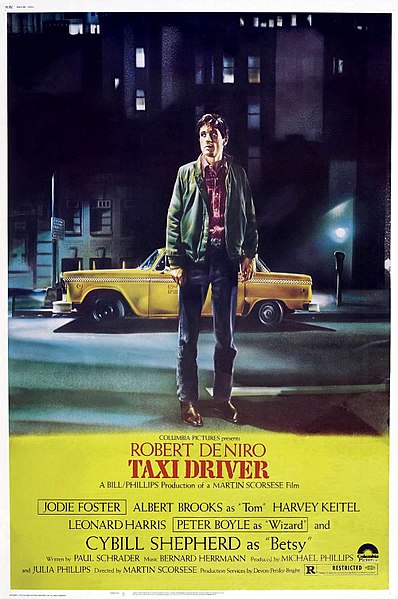 English: Poster for Taxi Driver, an American film starring Robert De Niro.
English: Poster for Taxi Driver, an American film starring Robert De Niro. Furthermore, the most vehement criticism on my part is that yes, the film does glorify crime. The character reaches the acceptance of the people through his crimes. As a feminist, she empowers herself as she escalates her infractions in the Penal Code. And, the film shows and gets us used to the naturalness of a homicide. The Joker simply kills some people, and that's it. Nothing that hasn't happened in Hollywood before, "Nature Killers" comes the mind. But in Joker, we feel like the killer. And it’s not cool, it’s not normal. I left the theater with the sounds of gunshots reverberating in my head.
Again, it is a very good film. Of the fool at the beginning, little remains, and in the end we really wish the Joker did not exist. The transition between the wronged good guy and the bad guy is not subtle, but it is exciting. The trivialization of violence is regrettable. Todd Philips was so creative in making an antihero movie with so little, but it could have been even more innovative if he had left the villain a little more innocent until the end.
SUMMARY OF THE CHRONOLOGY OF VAN GOGH'S LIFE AND THE EVENTS THAT HAPPENED AFTER HIS TRAGIC DEATH IN JULY 1890
SUMMARY OF CHRONOLOGY OF VAN GOGH LIFE
Por: Maria José G. Oliveira
August / 2019· ·1853 Nasce Vincent Van Gogh em 30 de março;
· 1857 Nasce em 1º de maio Théo Van Gogh;
· 1862 Primeiros desenhos que se conhece de Van Gogh;
1865 Van Gogh entra na M. Provily's institution in Zaven- bergen;
· 1869 Van Gogh entra como empregado na filial da Casa Goupil in Hague;
· 1872 Autumn.
1873 Théo em 19 de janeiro entra como empregado na filial de Bruxelas da Casa Goupil;
Van gogh receives an advance in May and goes to London;
In September he changed his pension and vai viver na casa de Loyer;
· 1874 Van Gogh é rejected by Úrsula Loyer in July;
Desperate return to Holland;
Em meados de julho volta a Londres com sua irmã Ana;
Por intermédio de seu tio Cent é enviado a Paris em outubro para que se distraia;
Volta repentinamente a Londres onde, em vão, tenta ver Úrsula;
· 1875 Van Gogh é um péssimo empregado em Londres;
Em maio é transferido para Paris. Vive em Montmartre e se delivery to mysticism. Seu trabalho o deixa cada dia mais angustiado;
His bosses complain about him;
Em dezembro, sem avisar ninguém, vai para a Holanda;
· 1876 Van Gogh retorna a Paris e seus patrões o despedem;
In April he left Paris and went to Etten. Emprega-se como professor na Stokes Anglican school at Ramsgate, onde chega no dia 16;
Mr. Stokes, in June, instala sua escola em Isleworth, us London surroundings;
Van Gogh travels East End, whose misery moves him. Comfort the poor;
It's fired in July e vai trabalhar para o senhor Jones como ajudante do pregador;
Van Gogh returns to Holland at Christmas;
· 1877 Em janeiro Van Gogh entra como empregado numa livraria de Dordrecht. Logo deixa esse emprego e em May 9 comes to Amsterdam para estudar para pastor;
· 1878 Em julho, Van Gogh abandona os seus estudos e sai de Amsterdam;
After a quick stay in Etten, no outono entra numa school Evangelist from Brussels. Mas após 3 meses não é nomeado;
Parte voluntariamente para Borinage and settles in Paturages;
At the end of the year the Evangelization Committee, surpreendido por seu ânimo e sacrifício, retrata-se de sua decisão e lhe dá um cargo por 6 meses em Wasmes;
· 1879 Van Gogh consome-se sem cuidar de sua saúde. Sua dedicação chama a atenção do Comitê de Evangelizaçãobut they do not renew their mission;
Van Gogh comes to Brussels;
Back to Borinage;
Durante o terrível inverno de 1879/1880 leva uma vida de miserável e repete-se a mesma pergunta: “Há algo fora de minha existência? So what is it?". Perde a fé. Desenha.
· 1880 – Van Gogh volta à Courrières, Where Jules Breton, one mediocre painter tem um ateliê. Completa a mudança. Após uma viagem decepcionante para Holanda, na casa de seus familiares, recebe 50 francos de Théo. Back to Borinage, a Cuesmes, e se reconcilia com Théo, a quem não escrevia há 9 meses. Põe-se a desenhar com grande intensidade. In October, he goes from Cuesmes to Brussels, onde faz friendship with Van Rappard and works methodically;
· 1881 – Van Gogh permanece em Bruxelas até princípios de abril. Chega a Etten no dia 12 deste mês. Trabalha. Durante o verão recebe visita de Theo e Van Rappard e vai para a casa de seu primo, o pintor Anton Mauve, that gives you advice;
Fall in love again e corteja apaixonadamente one of your cousins, Kee, during vacation in Etten and it discourages you;
Van Gogh insiste e ela se vê obrigada a voltar para Amsterdam. Van Gogh a aflige com cartas e finalmente vai a Amsterdam. Mas Kee se nega a vê-lo;
Desesperado, Van Gogh volta a Etten. Discute constantemente com seu pai e deixa a casa de Mauve em Haia;
· 1882 At relações com Mauve logo se tornam tensas. Van Gogh precipitates the disruption ao acolher a poor, prostitute, sick and pregnant woman, Sien; Graças a essa mulher, Van Gogh recupera seu equilíbrio e, após uma visita à Théo, põe-se a pintar;
Trabalha intensamente até o fim do ano, mas a degradation of Sien It's hopeless. Van Gogh priva- se de tudo. O drawing "Sadness" é dessa época, de que faz uma litografia em novembro;
Sua recusa do mundo dos conformistas – de todos os conformismos – é completa;
· 1883 Doente e esgotado Van Gogh reaches such an extreme of weakness that chama seu irmão, that this time can get away Sien on your side;
Van Gogh dilacerado, mas aliviado, volta a pintar. Pinta Tree whipped by the wind;
Leaves the Hague em setembro e chega em Drenthe. As paisagens desta região selvagem o acalmam a princípio, mas os dias atormentados voltam. Mil terrores assaltam Van Gogh que foge para Nuenen, where his parents were living;
· 1884 Janeiro. Quando sua mãe fratura uma perna, Van Gogh retorna por um tempo a seu lar. Mas your disagreement with your family's world has no solution. Van Gogh converte-se em um estranho para a sua família. Aluga dois quartos com o sacristão da Igreja católica it's there install your studio;
One last, e como as anteriores, unfortunate sentimental adventure o faz perder totalmente a hope of leading a normal life (autumn);
THE pintura será a única finalidade de sua existência, “a maneira de viver sem pensar no passado”;
Acumula um quadro atrás do outro and in autumn decide to paint nos dias de mau tempo 50 peasant heads;
Não para de se preocupar com as leis da cor, cuja importância descobriu;
· 1885 26 de março. Pastor Van Gogh dies suddenly. Sela-se a ruptura de Van Gogh com sua família;
Van Gogh now works in seu grande quadro do período holandês , Potato eaters;
It ends in May, which triggers a discussão epistolar com Van Rappard, who finally provokes separação dos 2 amigos;
Van Gogh a cada dia mais toma consciência dos recursos da cor;
THE Netherlands, cujo clima estético e moral é de agora em diante um obstáculo a seu florescimento, já não tem mais nada a lhe ensinar . Besides that, as The Nuenen cure he had forbidden his faithful what land for Van gogh, este decide abandon your studio;
In November 23 goes to Antwerp. “Desejo violentamente ver Rubens “disse;
His great journey to the south begins;
"There is", writes to Theo, “uma coisa extraordinária na sensação de que é necessário entrar no fogo”. For Van Gogh Antwerp represents a liberation;
Ali descobre Rubens, a cor, os tecidos japoneses, a luz e o movimento;
Their colors are defined;
· 1886 18 de janeiro. Van Gogh se inscreve na Academy of Fine Arts of Antwerp, onde sua short and stormy stay at least allows you to check what you are in the right way with regard to drawing and painting. At the early march, suddenly, arrives in Paris. Volta para a escola. Segue the Cormon studio course, but soon stops watching it;
Discover the “luminous” painting of iimpressionists;
Estuda a obra de Delacroix, de Monticelli, os artistas japoneses;
Conhece Toulouse- Lautrec, Émile Bernard, Gauguim, Seurat, Signat, Guillaumin, Pissarro, Cézanne, Tanguy, etc;
Sua palheta torna-se mais luminosa;
Free yourself from all pictorial experiences;
A cor começa a dominar em sua obra;
Plan to exhibit during the winter;
· 1887 Van Gogh continua febrilmente suas experiências, com todos os procedimentos e técnicas que os pintores de Paris lhe sugerem;
Pinta nas margens do Sena frequentadas pelos impressionistas;
despite numerosas e variadas influências, continua sendo ele mesmo, e assimila as lições à sua própria personalidade;
You are tired of Paris already;
Uma aventura que termina de maneira lamentável, a decepção que lhe causam as rivalidades entre os pintores, a indiferença com que é recebido, a agitação da grande cidade e, também, naturalmente, seu trabalho intenso minam sua resistência;
You are more or less sick, but above all compreende que Paris não é sua meta;
Seu cansaço e nervosismo aumentam ainda mais durante o inverno; Medita sobre lugares onde o sol é mais luminoso e a cor se reveste de todo o seu esplendor;
Sobre ir ao Japão quer dizer, ao Sul;
· 1888 Van Gogh chega a Arles em fevereiro
Be enchanted with the city. Acredita realmente estar no Japão;
The flowering gardens intoxicated him with happiness;
Paint without stopping;
Sua exaltação cresce à medida que o sol nasce ao qual rende um verdadeiro culto com a sua pintura;
Mas o espantoso desgaste nervoso com que Van Gogh paga por essa energia criadora coloca em perigo sua saúde; Além do fato de que não podia alimentar-se pior. Escreve a Théo “Não se pode evitar que qualquer dia sobrevenha uma crise”;
Van Gogh quer que seu amigo Gauguin se instale perto dele e que se fundem os estúdios do sul com que sonhava desde que saiu de Paris; Gauguin decides, in October, to return to Arles e os primeiros dias são um descanso para Van Gogh;
Desgraçadamente, os 2 artistas não eram feitos para se entenderem. Everything separates them: their temperaments and aesthetic tendencies;
Logo se torna evidente que a vida em comum entre eles é impossível. Isto representa um novo e grave golpe para Van Gogh;
Em 25 de dezembro o drama inesperadamente explode. Van Gogh se lança sobre Gauguin com uma navalha e sai correndo quando Gauguin se volta contra ele;
Ao voltar para casa corta um pedaço da sua orelha;
Van Gogh is interned;
Neste mesmo ano, Théo expõe no salão dos Independentes 3 quadros e alguns desenhos de Van Gogh;
· 1889 As crises continuam. Van Gogh procura lutar;
Logo compreende que o melhor para ele é permanecer internado;
Em maio abandona Arles para ir à Saint-Paul-de-Mausole, clínica particular perto de Saint- Rémy dirigida pelo Dr Peyron;
A princípio se acostuma nesta nova vida, mas contrariamente às suas esperanças, a loucura não o abandona. Uma nova crise o invade;
Apesar da enfermidade, não deixa de trabalhar;
Sua arte cada vez mais se torna expressionista;
At Christmas, there are two attacks;
Dois quadros de Van Gogh são expostos no salão dos Independentes por Théo.
· 1890 Boas notícias:
- the birth of Theo's son;
– a publicação de um importante estudo consagrado à sua pintura no Mercure de France;
– a venda de um quadro (A Videira vermelha) – o único que Van Gogh vendeu em vida;
· Nada disso pode fazer com que Van Gogh esqueça seu drama;
A long crisis throws him into atrocious despair;
He tries to kill himself;
Not being able to support life in Saint-Paul-de-Mausole, implora a seu irmão que o leve para o norte;
· Arrives in Paris on May 17, but goes on to Auvers-sur-Oise on May 21;
· In Auvers, Dr. Gachet assists him;
Your stay in this city begins well;
He paints every day;
Mas depois de visitar seu irmão e a cunhada, retorna desesperado para Auvers;
“Life”, as he says, “escapes you”;
You can't;
· Em 27 de julho Van Gogh dá um tiro no peito e morre no dia 29 a uma e meia da manhã;
· Dez quadros de Van Gogh são expostos neste ano no Salão dos Independentes; _________________
· After your brother's death, Théo tenta fazer uma grande exposição of his works. And on September 18 he writes the Émily Bernard: “A quantidade de quadros é imponente. Não consigo organizar um conjunto que possa dar uma ideia de sua obra”;
· Em 21 de janeiro, Theo Van Gogh morre na Holanda;
· Em seu testamento a obra de Van Gogh é avaliada modestamente em 2000 florins;
Muitas pessoas aconselham a viúva de Theo a destruí-la;
· 1892 sob os cuidados da senhora J. Van Gogh-Bonger, Theo's widow, organiza- se uma exposição de 100 quadros de desenhos de Van Gogh no Panorama de Amsterdam;
· 1893 start to appear on the Mercure de France cartas de Van Gogh a Émile Bernard e a seu irmão Théo;
Émile Bernard organiza uma exposição de 16 quadros de Van Gogh em “ Le Marc de Boutteville; em Paris;
· 1896 Augusto Vermeylen dá uma conferência apaixonada para os estudantes de Groningen (Netherlands) sobre Van Gogh e sua obra;
“Os quadros de Van Gogh vendem bem mais quanto mais baratos”. Gauguin escreve em novembro para Daniel de Monfreid;
· 1900 The Dr Rey, in accordance with Ambroise Vollard, retira de seu galinheiro, onde há 11 anos servia para tapar um buraco, o retrato que Van Gogh fez no hospital de Arles;
Vollard buys the canvas for 50 francs;
· 1901 Março. Na Bernheim-Jeune gallery, na rua Latiffe retrospectiva de Van Gogh (71) quadros;
Vlaminck, when leaving the exhibition said to Matisse:
“Gosto de Van Gogh mais que meu meu pai”;
Hugo Von Hofmannsthal anota em uma carta a prodigiosa emoção que lhe causaram as obras deste pintor que ele desconhecia.
”Me senti como se assaltado pelo milagre incrível de sua forte e violenta existência, cada árvore, cada pedaço de terra amarela ou verdejante, cada sebe viva, cada caminho escavado na colina pedregosa, a jarra de estanho, a tigela na terra, a mesa, a cadeira rústica, era um ser recém-nascido que se ergue diante de mim, saindo do espantoso caos da não vida, do abismo do não ser e eu sentia – não, eu sabia que cada uma destas criaturas nascera de uma dúvida horrível que desesperava o mundo inteiro, que sua existência era testemunho eterno do odioso abismo do nada …Eu sentia em tudo a alma daquele que havia feito tudo isso, que com esta visão dava uma resposta para se libertar do espasmo mortal de uma dúvida espantosa”– Carta de 26 de maio de 1901,em "Written in prose". And the gold of their bodies, de Gauguin;
· 1905 July August. Under the care of the lady J. Van Gogh-Bonger, abre-se uma exposição de 473 obras de Van Gogh (234 são quadros) no Stedelijk Museum, Amsterdam
Exhibition Van Gogh's Arnold Gallery in Dresden;
· 1906 Morre, aos 80 anos, a mãe de Van Gogh;
· 1908 January. Segunda Exposição de Van Gogh na galeria Bernheim-Jeune, em Paris (cem quadros);
In the same month, Druet exposes in your galeria Faubourg Saint Honoré 35 frames Van Gogh;
· 1909 Second Van Gogh Exhibition at the Druet gallery on Rue Royale 20 (50 paintings);
Van Gogh exhibition at galeria Brack,de Munique;
O Dr Gachet morre aos 81 anos em Auvers-sur-Oise;
· 1910 – Van Gogh na exposição “Manet e os pós-impressionistas” Crafton's London;
Ambroise Vollard publishes Van Gogh's letters to Emile Bernard;
· 1912 Van Gogh é representado por 108 paintings in the exhibition in modern painters organized by West German artists' society in Cologne;
· 1914 A senhora Van Gogh-Bonger publishes in Amsterdam the letters from Van Gogh to Theo;
As cinzas de Théo são levadas por ela da Holanda a Auvers-sur-Oise;
Exhibition Van Gogh na Cassirer gallery in Berlin;
Obeying the wishes of Verhaeren, a Contemporary art society exhibits Van Gogh's works in Antwerp;
· 1921 Eight frames de Van Gogh na exhibition of museums in the Netherlands de obras de Rembrandt a Jean Steen, ocorrida em Paris;
· 1924 Van Gogh exhibition at Kunsthalle gallery, in Basel and on Galeria kunsthaus, de Zurique;
Segunda edição das cartas de Van Gogh a Theo;
· 1925 Morre Joana Van Gogh-Bonger, Theo's widow, on September 2;
· 1928 J.B. de Faille publica um monumental catálogo da obra de Van Gogh, depois de uma discussão dos experts sobre a autenticidade ou falsidade de algumas obras;
Exhibition de Van Gogh na Berlin National Gallery;
Exhibition of drawings by Van Gogh at galeria Dru de Paris;
· 1932 Dies Dr. Rey on September 15;
· 1935 An exhibition by Van Gogh on touring the United States.
· 1936 1ª edição em Nova York nas cartas de Van Gogh a Van Rappard (traduzidas para o inglês);
· 1937 A selection of letters from Van Gogh to Theo appears in Paris; As cartas de Van Gogh a Van Rappard aparece em Amsterdam;
Os nazistas denunciam como decadentes as obras de Van Gogh, what are excluded gives Neue Pinakotheke de Munique;
· 1950 A tradução francesa das cartas de Van Gogh a Van Rappard aparece em Paris;
· 1953 THE centenário do nascimento de Van Gogh é celebrado with great joy;
A biblioteca Wereld, de Amsterdam, começa a publicar a correspondência geral de Van Gogh (edição do centenário).
O 1º volume aparece em 1952 e o quarto em 1954;
· 1958 em outubro, em Londres, Jardim público de Arles, de Van Gogh é vendido na galeria Goldschmidt por 132.000 libras esterlinas;
1990 em 15 de maio é feita a biggest transaction in the history of the art market so far : um dos Dr Gachet portrait de Van Gogh é vendido a um milionário japonês por 82,5 milhões de dó
Egas Francisco
We visited Egas Francisco's studio and were very well received. Here is the interview:
We also did a 3D tour in his studio:
And a guide for the tour:
If you are interested in any of the works, contact us. If you want to book the 3D Tour, send us a message.
News at SmartGallery
This August had the incredible exhibition of Doris Homann at Ligia Testa Espaço de Arte. Some works are here at SmartGallery and I personally liked DH 19 and DH 9 a lot. They are very strong canvases, given Doris's background and life:
October there will be an exhibition of Egas Francisco at Joh Mabe Espaço Arte e Cultura, organized by Ligia Testa. Egas visited the office last week and he is a fascinating person, later we will do an interview with him. His exposure is the result of therapy sessions with Dr. Isac Karniol. Egas seeks to make his art, absolutely spontaneous, the invisible in visible. I received a signed copy of the book Palimpsesto Mágico, and I recommend, besides the paintings by Egas, the text is very good.
Other highlights are the Francisco Gonzales and Décio Soncini, who recently exhibited at Joh Mabe Espaço e Cultura and now have their works here on the site. There are screens of reduced measures with excellent value, worth checking out.
 Décio Soncini - O Vento (The Wind)
Décio Soncini - O Vento (The Wind) Francisco Gonzales - The aquarium sky
Francisco Gonzales - The aquarium sky Francisco Gonzales - The desire to fly
Francisco Gonzales - The desire to fly Décio Soncini - Black and White Prints
Décio Soncini - Black and White Prints
Also 3 new artists joined SmartGallery and I recommend that you check out their works, Carlos Lorenzo, Cristiano Chaussard and Landrou Sá
This is the August update, until next time.
Biennial, museums and galleries
The Bienal in São Paulo, in the heyday, was the ultimate goal of artists, mostly painters and sculptors. To be awarded at an international Biennial was the dream. Those were the times of art, from the patronage of Matarazzo until the early 1980s. Ciccillo Matarazzo literally created the Bienal in São Paulo, and also literally, the military dictatorship led to a decline from 1965 to 1973, with some artists signing the Manifesto “Not the Biennial 'at the Museum of Modern Art in Paris, in 1969.
 Sérgio Valle Duarte Wikidata has entry Q16269994 with data related to this item. [CC BY 3.0 (https://creativecommons.org/licenses/by/3.0)]
Sérgio Valle Duarte Wikidata has entry Q16269994 with data related to this item. [CC BY 3.0 (https://creativecommons.org/licenses/by/3.0)]That was the dream in the past, and what is the dream today? Of course, participating in a Biennial still gives a lot of prestige, but we can define it as the final goal for a work of art, to be in a museum, or to be museum quality, jargon of the academic art world. The museum is the ultimate destination for works by validated artists. It is a public institution, maintained by government funds or private donors and maintainers, and, just like Petrobrás “is ours” for Brazilians, the museum has become a friendly place, as demonstrated by the recent exhibition by Tarsila do Amaral, at Masp.
A fundamental distinction between museums and galleries is that the latter are intended to make a profit for their owner or dealer, whereas museums are nonprofit, even though they are even more commercial, or marketable; see the MOMA store. But most museums charge admission while the galleries are free to visit. The Art Dealers Association of Americas mentions that galleries in New York offer the best free education in art appreciation. The exhibitions in the ancient Colnaghi and Agnews galleries in London rival that of museums.
 Jan Steen [Public domain] One of the works that went through the Colnaghi gallery in London and is now in a museum
Jan Steen [Public domain] One of the works that went through the Colnaghi gallery in London and is now in a museumIt is true that some galleries operate as private dealers, and visitation is closed or by appointment only, and, despite the immense progress, they still do not rival museums in Brazil. But the point of this article is to value their work. Returning to the dream, for a beginner artist, a college degree in arts or a Master in Fine Arts (MFA) is a good way to achieve something in the galleries, first with collective and then with individual exhibitions, being the commercial acceptance of the work fundamental for advance.
But, an MFA is a fortune today, apart from the cost of living abroad. And sometimes, the artist will be lucky if he succeeds with his MFA to be one of Jeff Koons' helpers. There are several paths for an artist, nowadays, direct selling through Instagram is common, even by established artists. It is also complicated to have to take an art course, as many of the greatest masters are self-taught, and the artist often develops a job and is satisfied with his art.
Finally, people tend to think that the museum is the only place for the arts, and really is the heyday for most artists. But, they are touched by human beings like us, maybe candidates, maybe nominated, or maybe just well connected. In today's competitive art world, where the means of production and dissemination are democratized, there is also a lot of value in having your work in a gallery. As well as, visit and know the galleries that work with open doors.
Muggles from SmartGallery, time to buy art
I was running in the park ... With headphones and trance music in my ear, I heard a group of girls talking about the Muggles at SmartGallery. Delirium? I don't know, I thought it was good ... Talk bad, but talk about me? But my marketing guru soon made a point of downloading a video about how the best selling brands are liked and well spoken by the public, and suddenly, it was no longer good. But, really? Muggles from SmartGallery? It's me writing here, my partners, I hope, endorse… My wish was to go back there and ask if I heard that.
At the same time, we planned to buy some art… To compose a collection, etc. And Trump there, going down the wood, causing. And me, what if something happens ?? Won't that money be needed? For a painting, which will be on the wall? And my grandfather, he always said, that people saw pictures, and didn't value them, but if it was a suitcase of dollars, or a car, the attitude was different. And I don't want to be the guy who doesn't appreciate art, but for those who, in theory, always had art, it's hard to evaluate.
Of course, the story is not endless here. If buying art today sounds like an absurd, nefarious, abominable, unspeakable idea, maybe this is the time to buy art. Because, in my experience, any asset is not at its point of purchase at the time that everyone wants to buy. If, even for me, that I benefit from the movements of the art market, buying art today is something threatening, maybe this is the time to buy art.
What art? Then I don't dare to judge ... But think about something ... That the Brazilian market is not that kind of thing, and maybe you, in fact, will be with art X for several years. Forget the money ... Think about merit, appreciation, forget what you could gain from stocks or dollars in a day. If you are going to buy art, assume that the money will be hanging there for a few years, and just as it is almost impossible to find out which asset or stock is going to rise the most, your art is probably not the winner. The important thing is that you think it is.
This is the most important point, liking the art, having an empathy with the work ... Because it will be a hanging picture, like an underestimated company, in most cases. But endorsed, perhaps, by Muggles from SmartGallery. And, who knows, have a future, besides adorning your wall.
Freud and Art
Freud revolutionized current thinking since the mid-19th century, throughout the early 20th century and until his death. From it there were dissident psychoanalysts, who opted for new paths, and others, collaborators, who advanced in their theories. Psychoanalysis, as a whole, created a life of its own and became one of the most emblematic sciences of the 20th century.
Freud's ideas win over the common thinker
Most sciences, as they become more complex and more sophisticated, tend to distance themselves from the lay public, become the domain of specialists who inevitably end up segregating knowledge among their peers. However, Freud's concepts about Dreams, the Unconscious, Sexuality and Faulty Acts became known and reached a huge number of people, getting very close to the lay public around the globe. Somehow, more or less, depending on the level of information, it can be appreciated, commented on, reflected on, or at least quoted, by all types of people.
In two years, two books will change the world forever
With Freud's books, The Interpretation of Dreams (1900) and Psychopathology of Everyday Life (1901), all people, not only those with psychosomatic symptoms, have been able to take advantage of their theories and fit in and insert them in some way . Curiosity about subjects as intriguing and thought-provoking as dreams or sexuality, quickly generated the desire to understand or at least approach their theories.
Freud and Art
In Art, Freud's influence was absolute for painters like Salvador Dali, Magritte and so many others who used dreams to build one of the most well-known movements in Art History, Surrealism. But Freud's ideas did not only have a contemporary effect and that continues today, all his thinking also had a retroactive effect. Everything that was done in terms of Art can now be analyzed from its point of view. In this way, Freud also promoted a new reading about Man, about everything that Man had done until then. Thus, we have a whole new old world to rediscover, to analyze, to unravel and make it part of what we are today, to become part of it. In this short article I will cite some works of art easily found in books or on the Internet.
Forgotten and rescued forever
Today we have the history of all areas of knowledge extremely widespread and compartmentalized in periods, stages of development and the authors and personalities who made it. Today the Internet globalizes knowledge and we are practically borderless when it comes to accessing information. But it was not always so. In the History of Art, many painters were completely forgotten after his death or were relegated to a secondary or even non-existent level. This happened to one of the figures we now consider extremely rich. I'm talking about Hieronymus Bosch, a Dutch painter who was born in Hertogenbosch in 1450 and died in 1516. It is considered, due to the lack of records, that he never left his hometown, however, in his work, he made one of the greatest trips that a human being can make a trip to the world of the imaginary, the fantastic and the dreams. His works contain a complex network of symbols, scenes of sin and temptation, allusions to alchemy and a whole arsenal of possibilities for experimentation in terms of sexuality. Within this panorama, any psychoanalyst will need his whole life to discern the enormous range of representations of this painter, such is his originality, depth and amount of details in his works to be considered. In terms of lack of judgment and feeling free to paint and express whatever comes to mind, the essence of Freud's Free Association method, Bosch seems to be exemplary because in his paintings he seems to expose absolutely all the images that he sees to that are produced directly by your unconscious, without censorship, repression or judgment. To cite just one example, I will use the triptych called Jardim das Delicias. In this picture you can see a vast amount of sexual possibilities involving people, animals, demons, saints and even botanical elements. You can also appreciate in the third part, which refers to Hell, all kinds of torture, depravity, masochism and sadism. Many possibilities for satisfying the desire can be paralleled there or find an echo, however small. Bosch then becomes one of the most perfect examples of sublimation of wishes in the form of art. A painter who will be forever testing any psychoanalyst's analytical skills without ever running out of possibilities.

Chiaroscuro - Conscious and Unconscious
Another painter, also Dutch, is Rembrandt (1606-1669). He was characterized mainly by establishing his figures in points of luminosity as opposed to large parts of the work in full darkness, as if the scene or people involved in the painting were emerging from the dark, which, in terms of Italian expressions used by historians and critics of art is called chiaroscuro (chiaroscuro). The analogy with Freud's work is established when we think of the Unconscious, all of it is plunged into great darkness, preventing us from discerning exactly what is on the dark side of the work. An example is the painting The Philosopher Thinking. It is a beautiful work produced only in rich earth tones ranging from yellow to darker brown. It depicts on the left side an elderly person sitting in the living room of his house and seems to be reflecting; on the right, someone seems to stoke the fire in the fireplace, and in the center of the painting a large spiral staircase rises to the top floor, but the bottom steps of that staircase end in complete darkness. In this way, it is as if the part of the Conscious was there represented by the man reflecting illuminated by the light coming from the window, the Pre-conscious portrayed in the ideas being stoked by the fire of the fireplace shrouded in darkness, and, in the center, a ladder leading mysteriously to the enormous darkness of the Unconscious. The whole picture produces in the viewer a desire that is practically impossible to contain, to climb the steps of that ladder, a desire to search, to discover the most hidden feelings in the darkness of the Unconscious.

Storms and delusions
The third painter I will quote, also Dutch, needs no introduction, he is VanGogh. He suffered from psychotic episodes and hallucinations, his painting is characterized by brushstrokes that bring enormous expressiveness to being wavy and punctual, generating a great effect of mobility in his works. Through painting, he sought refuge for his troubled mind where madness and art went hand in hand. If Freud had the possibility to treat him, he would certainly obtain favorable results, however, Van Gogh kills himself with a revolver in the middle of a wheat field in 1890, when Freud started his studies and started his journey towards the creation of Psychoanalysis . His self-portraits are particularly strong, showing his deepest emotions at different times, subject to the most different deprivations.

An old new world to be rediscovered
I cited three painters, many others can be cited, the whole history of mankind to be seen and reviewed under the perspective of Psychoanalysis.
Bottegas, Jeff Koons and the art studio
I was born in the middle of art. Ever since I was a child, I had seen the paintings of my grandfather, Manabu Mabe, he stayed in his studio all day, and later on, he never left my uncle, who also paints. My father has always had a gallery, and I not only attended many exhibitions, but also went to the Bienal, which was a super event, and took painting classes with my grandmother, my sister and my cousins. My grandfather had many painters friends and even some apprentices. That was my view on art, and everything was very grand.
Over time, I learned that this is the most traditional and romantic view of art. The one we see in films and on television, of the artist painting alone in his studio and often struggling to live off his art. But it is not the only one. It is with great disdain that I hear about artists who do not produce their works themselves, who have teams and people hired to do their projects. So much so that I decided to learn about the subject.
 Viggo Mortensen in 'A Perfect Crime' (1998) - Warner Bros.
Viggo Mortensen in 'A Perfect Crime' (1998) - Warner Bros.Not surprisingly, I discovered that the origin of art studios occurred in the Renaissance. The most famous painters had bottegas, which were ateliers that they played and had a team of apprentices to assist them with the works, often commissioned by patrons, or patrons. At bottegas (not to be confused with bodegas, Spanish word for groceries or convenience stores) had a maximum of 16 painters, who went up as they demonstrated their talent to the master.
The degree of involvement of the chief painter varied according to the amount he received from the patron for the work, and, as the paintings were, in most cases, oil-based, they worked in parallel on several works while the canvases dried. Ordering a canvas from a famous painter in the Renaissance did not mean that the painter would paint the entire canvas on his own, but that the work would come from his studio, or bottega.
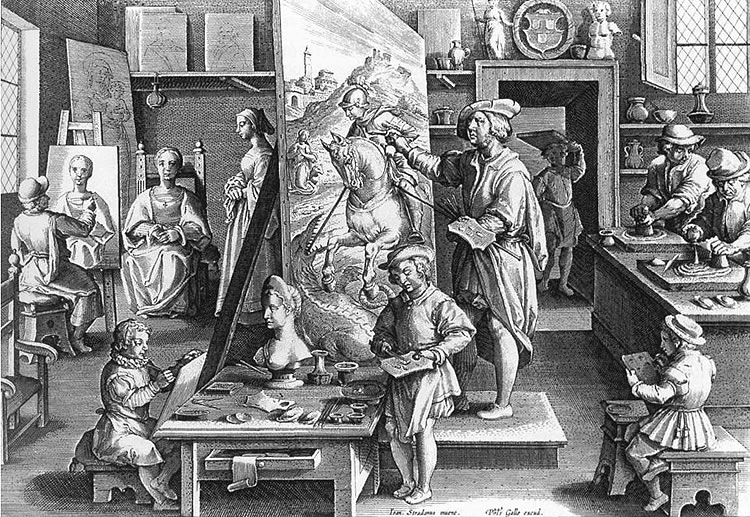
Further on, in the 19th century, the École nationale supérieure des beuax-arts appeared in 1816, in France, which challenged the Renaissance model by promoting its own exhibitions, called salons, which have become the biggest art events of the century by supporting, promoting and criticizing artistic developments.
In the 1960s, Andy Warhol emerged with the The Factorythat was yours art studio and party room. He became known for the series production of works of art, through silk screen, and the parties he promoted, attended by celebrities.
 James Kavallines, New York World-Telegram and the Sun staff photographer [Public domain]
James Kavallines, New York World-Telegram and the Sun staff photographer [Public domain]Today the best known is perhaps Jeff Koons, who literally has 100 employees who receive a very low salary, and produce the works he idealizes. His role is more like that of an architect, who designs the work. Curious about Koons, I found a description about his process. He makes collages in Photoshop and his team reproduces the collage, thoroughly, using small-tip brushes on larger-scale screens. You have certainly seen collages of other artists on Instagram, and the precursor is undoubtedly Koons.
Koons has the job of idealizing the work, making the composition, with balance and color balance and arranging the images. With his team, the results are impressive, some screens actually look like photos. Let the first stone be thrown by anyone who has never been impressed by a collage, now imagine that Koons collages are not simple collages, they are oil painted canvases.
 “” by Annie Guilloret is licensed under CC BY-NC-ND 2.0
“” by Annie Guilloret is licensed under CC BY-NC-ND 2.0 But, they are not painted, nor sculpted by him. In the Renaissance, the painters, in addition to finishing the works, were responsible for the most difficult parts, the faces and hands. And this is exactly the question of that text. If art moves in the direction of advertising; in the past, agencies had some geniuses, who created catch phrases, slogans and idealized the campaigns, whereas today they are mega corporations that work in tune, but no longer supported by an advertiser.
For most, it is as if a footballer does not play himself, or puts another to play, or assembles a team. Or our reaction to discovering that James Bond, The Three Musketeers and the Count of Monte Cristo, were written by ghost writers. In the case of these, the author of the book has the idea and the ghost writer translates this idea into a complete work, usually with a confidentiality clause. In music it is also common to ghost writing.
The idea of art and artist that prevailed, originated from the book 'A Vida dos Artistas', by Giorgio Vasari, written in 1550, which proposed that the work of art is the complete expression of a single mind and hand. Despite not taking the merits and recognizing that the finished works of artists like Jeff Koons are impressive, I, who paint in my free time, chain smoking and everything else, I am a fan of the romantic view of art. For the tendency of things to take on too large dimensions, and to distort, is very high. Let’s keep artists, artists, and advertisers, advertisers…
Does Art Exist without a Contemplator?
The question has been walking me through the synapses and the scarce moments of doing nothing. What is a museum with walls full of works of art and immersed in the most absolute emptiness? There are no leisurely steps, whispers about the impression caused by that image, desires to have that work at home or to be the last one to be chosen in the world, the rush of children. What are the works installed in the most perfect exhibition, millimetrically placed to satisfy the desire that our brain feels for symmetry?
One day, another question intertwines that instigated me as a child: if a tree falls and there is no one around, will there be noise?
In Google times, it is impossible not to find the hiding places of impossible questions from other times. The answer is no! Sound does not exist because it is just a sensation, a perception of sound vibrations. Thus, 'when a tree falls, it does not produce noise, but sound vibrations in the atmospheric air' that become sound upon reaching our ears. Smells, too, 'are only odorant molecules in the air capable of activating the decoded olfactory receptors in the cortex'.
And art is emotion. Without her contemplator, emotion is lost, art does not exist.
The air is impregnated by everything that art can produce, such as joy, indignation, anger, strength, in short, it is a transcendental energy that travels with skill to our deepest unconscious. Without her contemplator, however, all this is lost, art does not exist.
And art involves a process that has wasted energy from the creator and that establishes an exchange between him and those who contemplate it. Art is a relief in this world of atrocities and exacerbated consumption, it transforms and expands consciousness. Without her contemplator, however, all this is lost, art does not exist.
And the contemplated art is a form of prayer, a high pleasure, a connection with the universe. If people - more and more distant and more involved with themselves - start to contemplate art, a kind of link is formed between them, bringing them closer with a kind of easier communication. Without her contemplator, however, all this is lost, art does not exist.
Ernest Fischer said that the function of art is not to pass through open doors, but to open closed doors. Without her contemplator, however, she opens the doors and finds the house empty.
Subjectivity in art and how to obtain objectivity in its valuation.
I was thinking about what to write in this inaugural article on the SmartGallery blog and some ideas came up. From how to start an art collection to how to analyze the factors that influence its pricing. Searching, I wandered to the distinction between price and value, old buzzword prescribed by Oscar Wilde. And I ended up choosing the subjectivity of art and how to achieve objectivity in its valuation.
Art is a human science in general, but not necessarily, for that reason, subjective. In research, I collected several interpretations. From a gallery owner specializing in hyper-realism, who argues that people don't buy Basquiat because they like what they see, and that it is all a big distortion, even critic Jerry Saltz, who advocates the reinvention of skill and does not pay attention to the perfection of technical. Saltz argues that today's greatest contemporary artists are self-taught and that good art relates to the artist's context and timeless conditions. Another of his interesting observations is that we live in the world of Wikipedia and that it would be an open art world. Observation that contrasts with the stereotype of the closed and exclusive art world, in fact, a more realistic interpretation. Art and its tools, as well as its propagation, are more accessible to its producers, but Waltz himself argues that 75 artists dominate major international auctions and leading galleries.
The subjectivity of art is connected to the valuation and pricing of works by the principle of hedonistic pricing of art: here, we discuss the pleasure or satisfaction that the person feels for the work, as well as its aesthetic attributes, an important factor in price paid. In contrast to the historical series that are the obvious and usual way of pricing the works of the great masters.
Traditional economic factors also influence prices, but there is a science called Art Economics, which few know about and which has some interesting concepts. For example, it is well known that the majority of established artists have a value of 5% per year as they age. Another, resold works that appear at auction often tends to devalue with each sale. Here the question of supply and demand, if it is always for sale, collectors do not rush to acquire. Another curiosity is that the former owner of the work greatly influences its price, and works given as gifts by the artists are considered of lesser value by the market. Market defined as "smart" by Saltz.
Continuing in the Economy of Art, art movements are accepted by us but we never question how their hierarchy works. And, according to academics, it works as follows: there are the founders of the movement, who invented the style, and the followers, who are lesser known artists but who joined the movement. Regarding movements and even the great masters, everyone is best known for some objects in common in their main works, Dali with watches and his wife, Klimt for erotic women and this would be the second variable, the first being their main styles. Obviously, the most valuable works of these artists are those of their most well-known styles and objects.
Now focusing on local markets, defined by academics as competitive and with an unlimited supply, but of greater interest to us who aspire to start an art collection, there are some important objective factors in measuring the potential for valuing art, regardless of hedonistic valuation. Firstly, artists who live abroad and / or have international experience are more likely to appreciate themselves. Returning to Saltz's Wikipedia, the number of search results on Google by the artist's name is an objective issue in measuring the spread and notoriety of his work, also relating to the potential for appreciation. Finally, referring to an interesting New York Times article, which discusses the artist's profession and its stereotypes, the artist dedicates time and life to his work, in most cases, and needs to be paid. For what amount? There it is up to us, the smart market.
On the Coast of Valencia, 1898, Joaquín Sorolla
On the Coast of Valencia, 1898, Joaquín Sorolla
Medium: oil, canvas
https://www.wikiart.org/en/joaqu-n-sorolla/on-the-coast-of-valencia-1898
Petworth, the Drawing room, 1828, William Turner
Petworth, the Drawing room, Bodycolor on blue paper, 1828, William Turner
Medium: watercolor, paper

